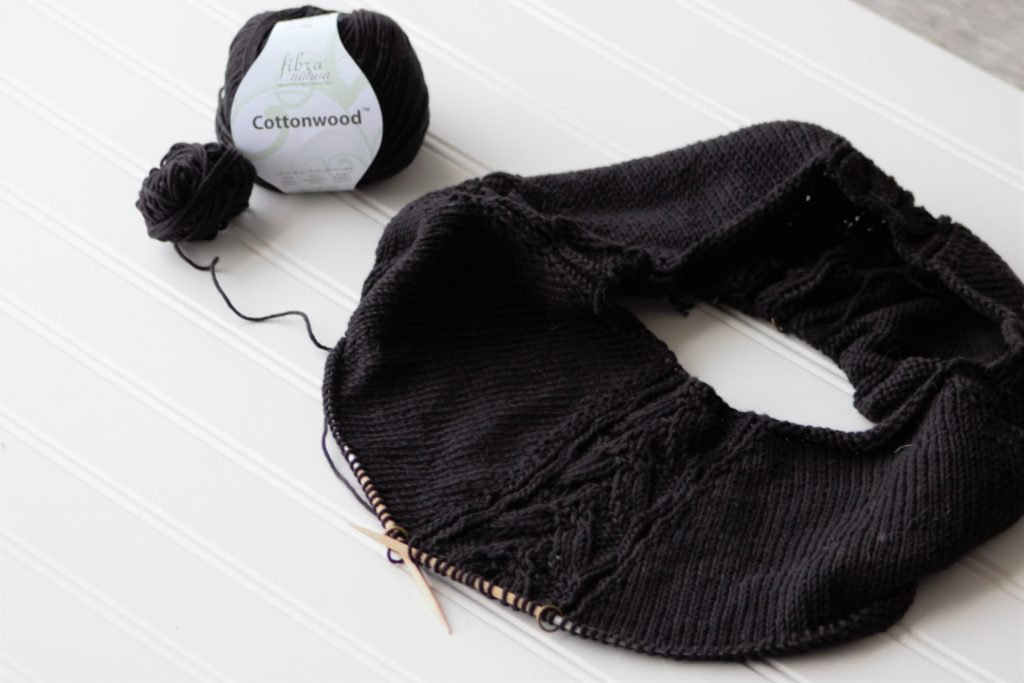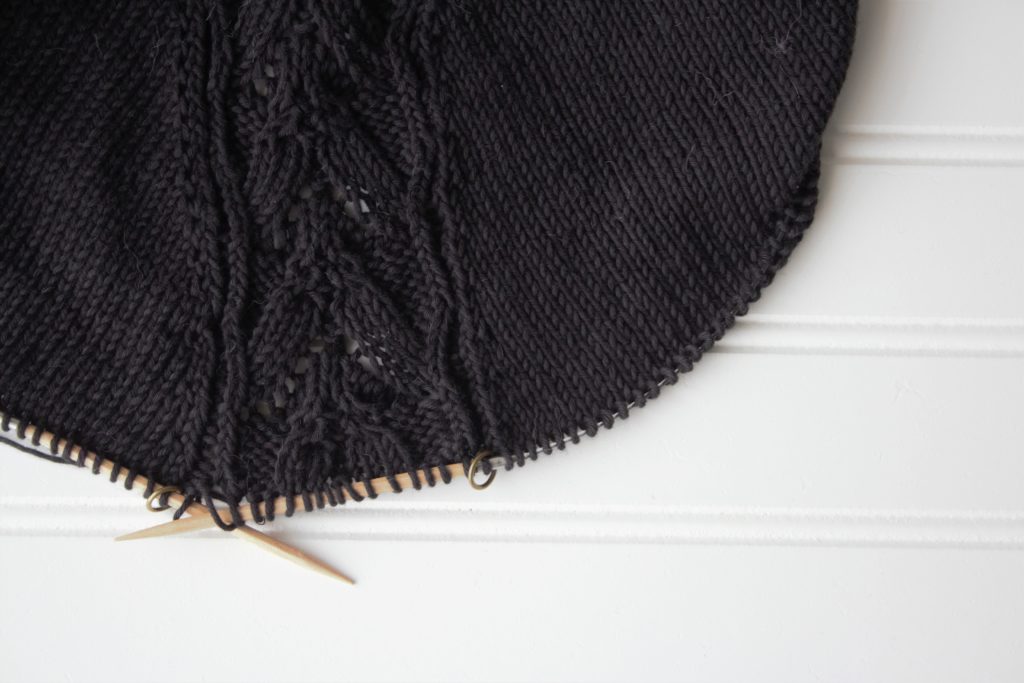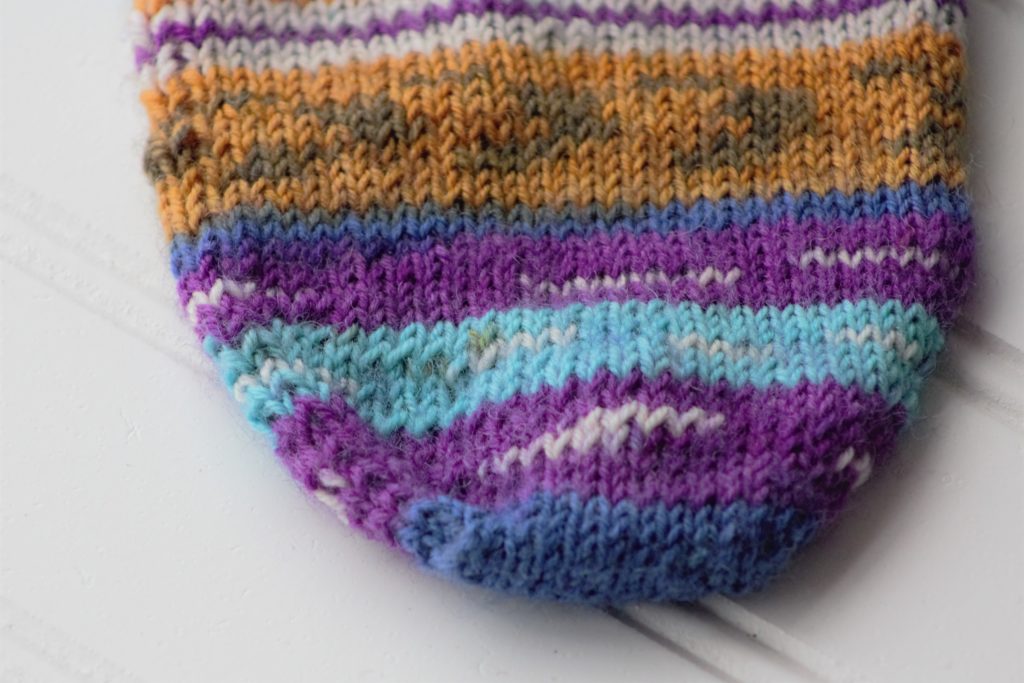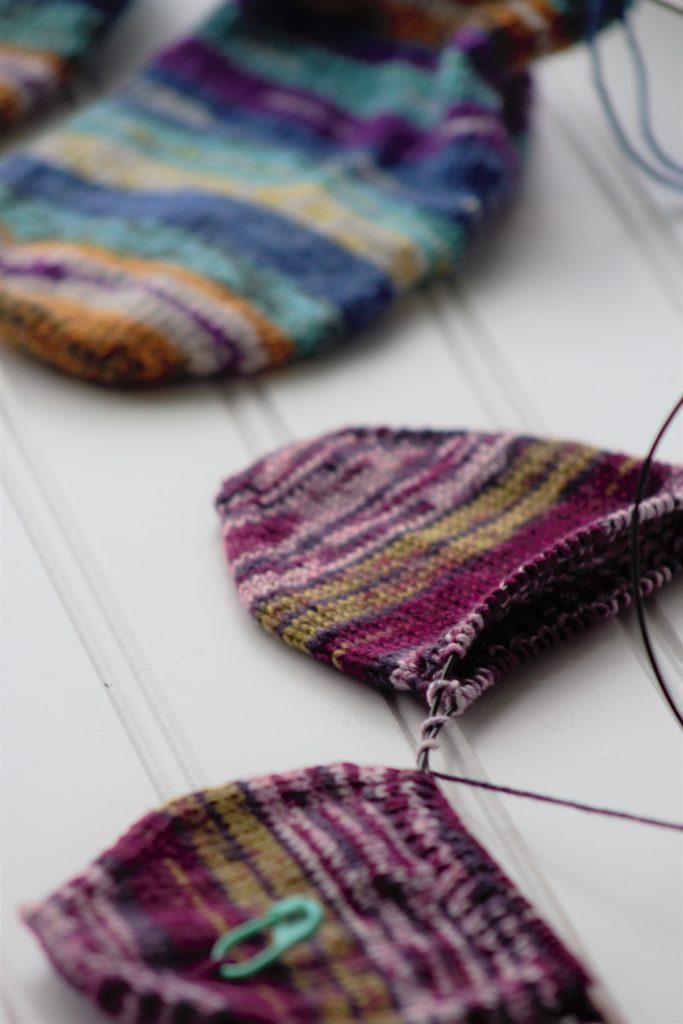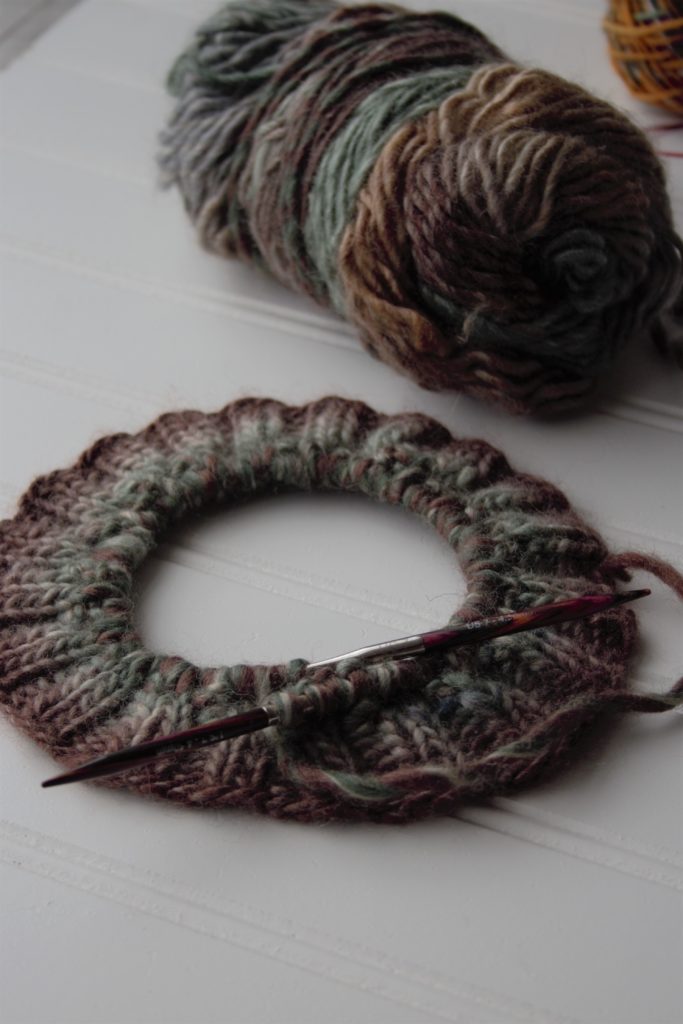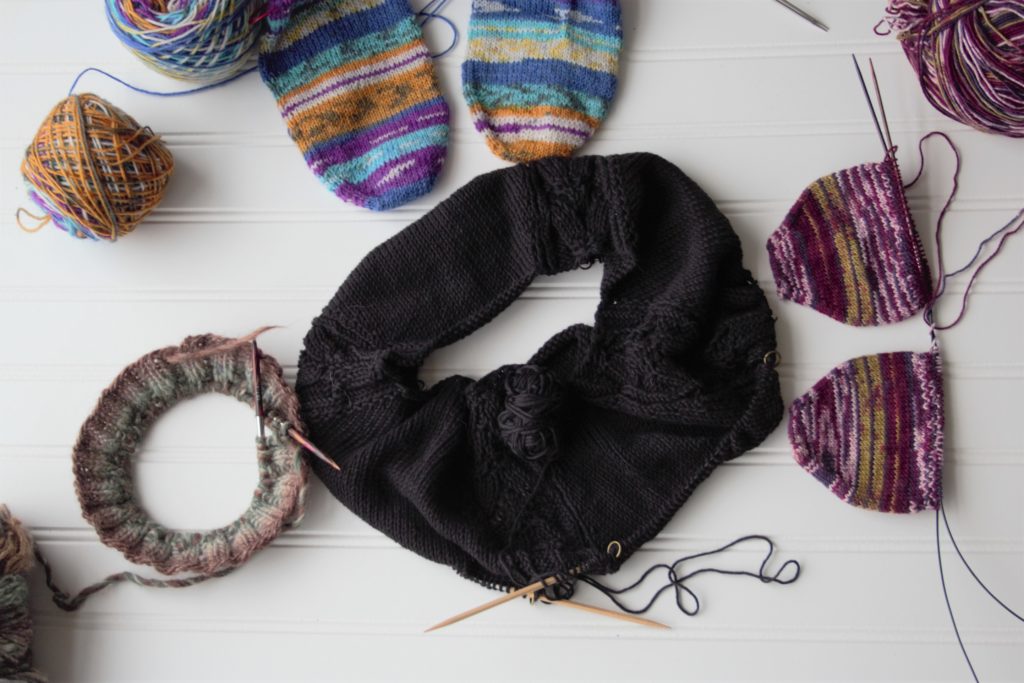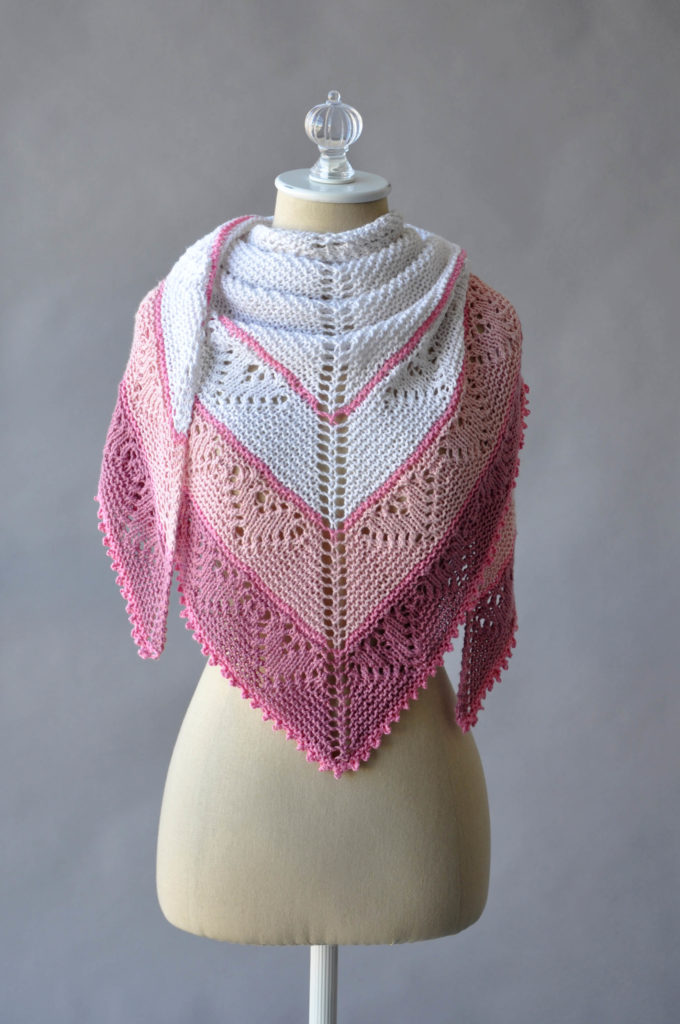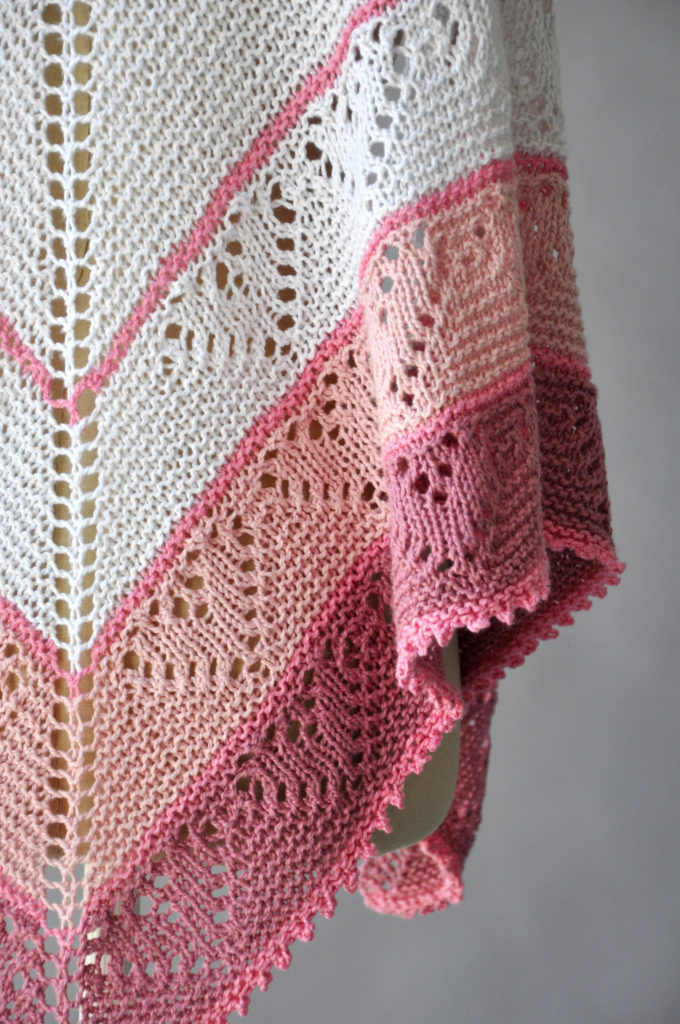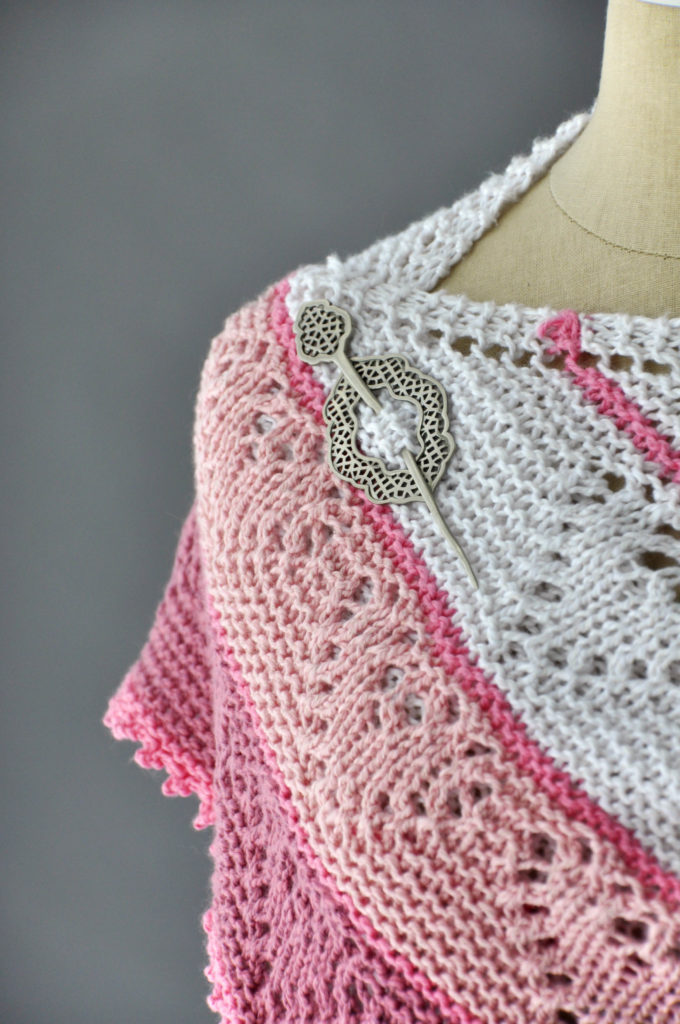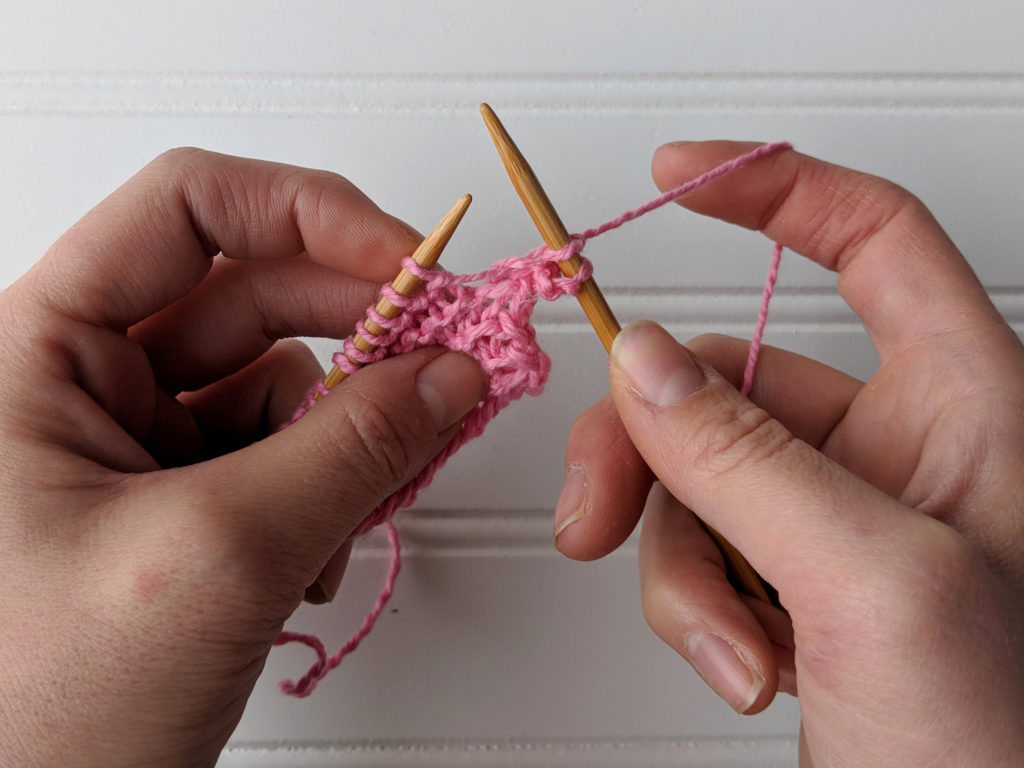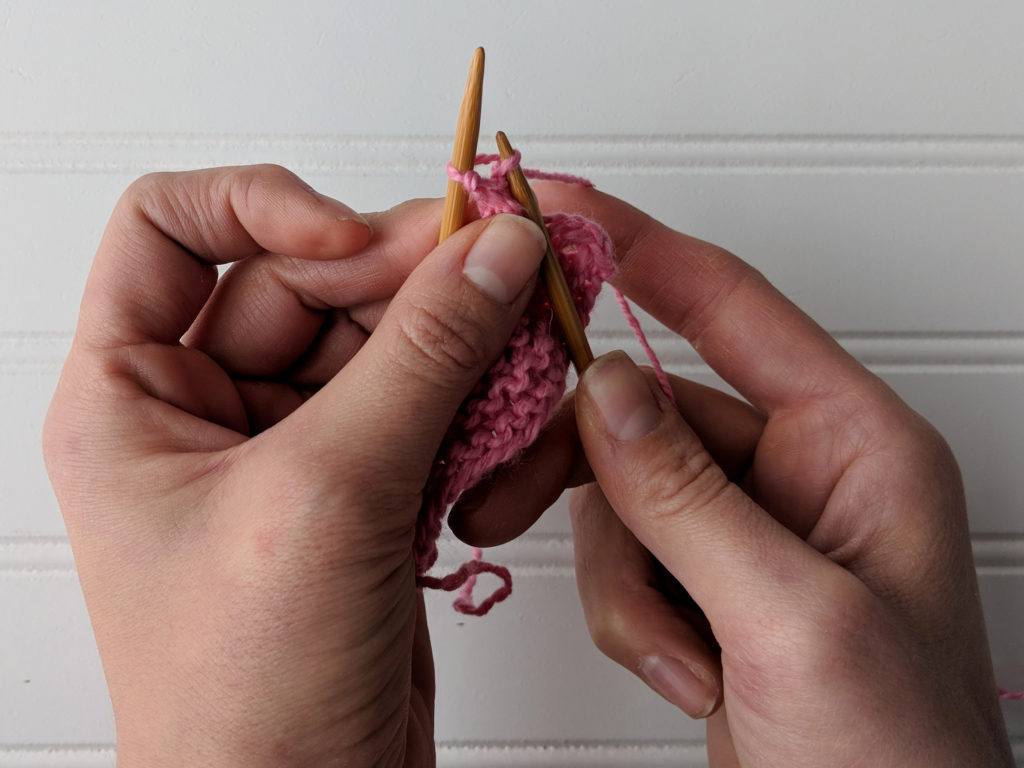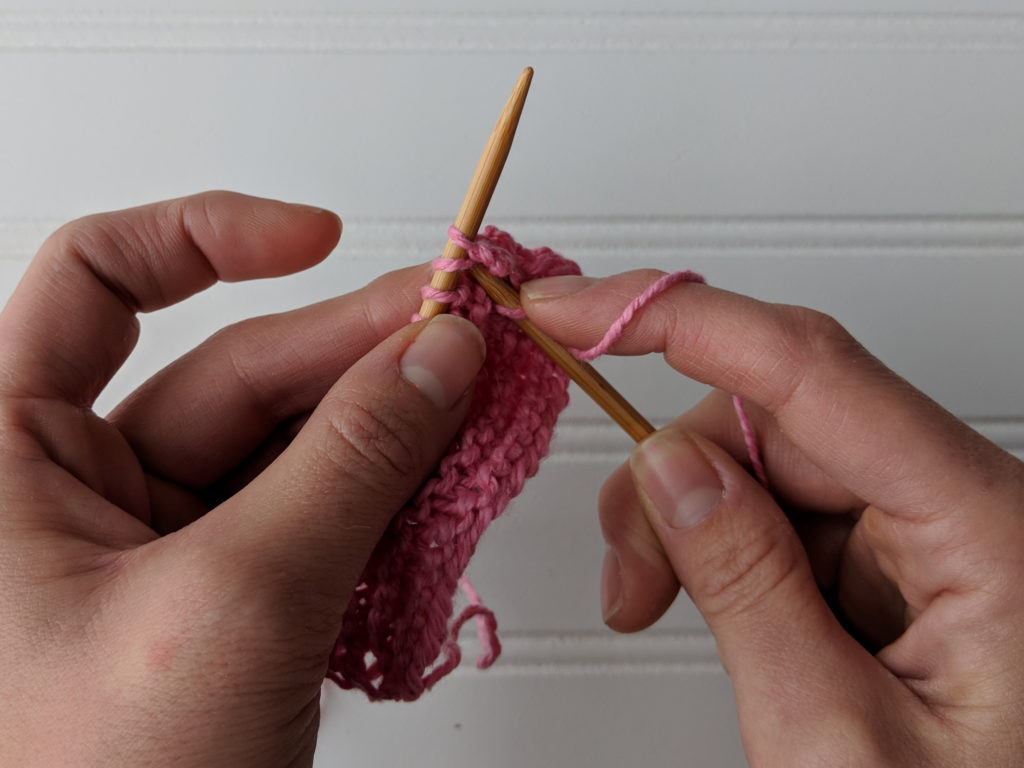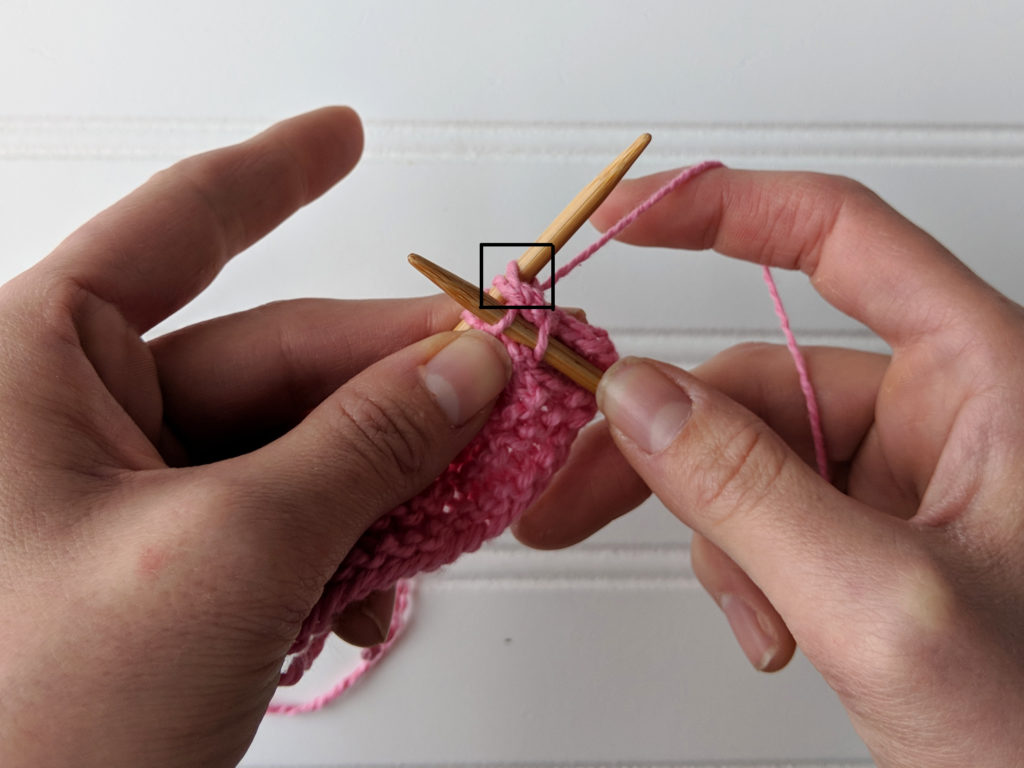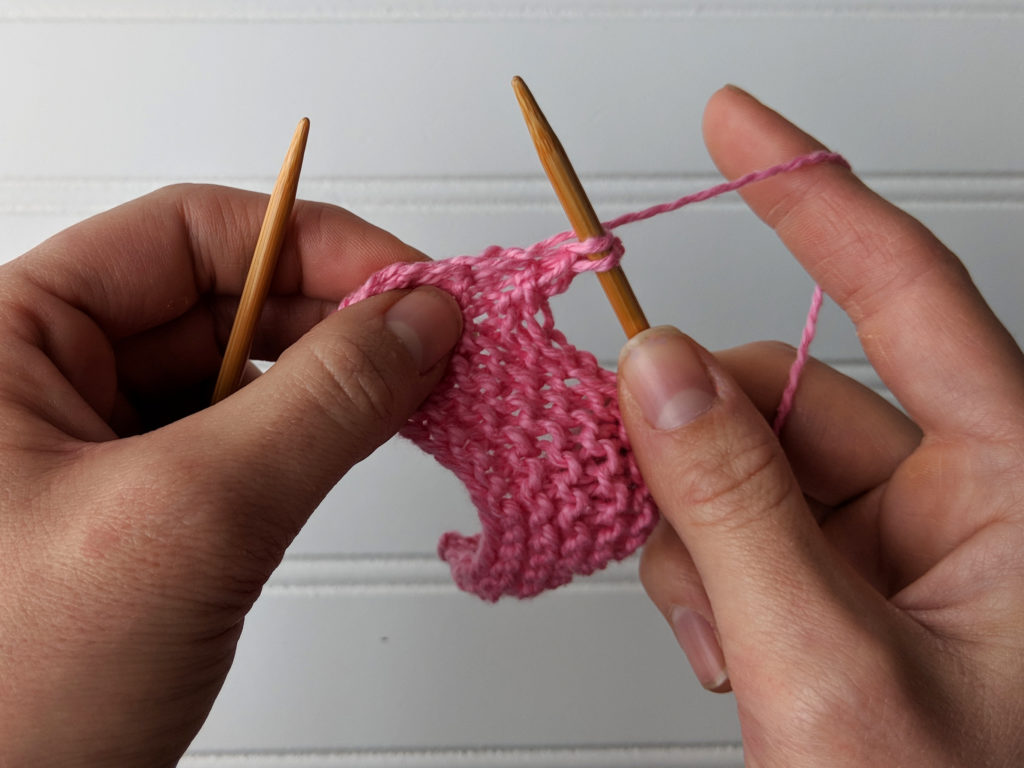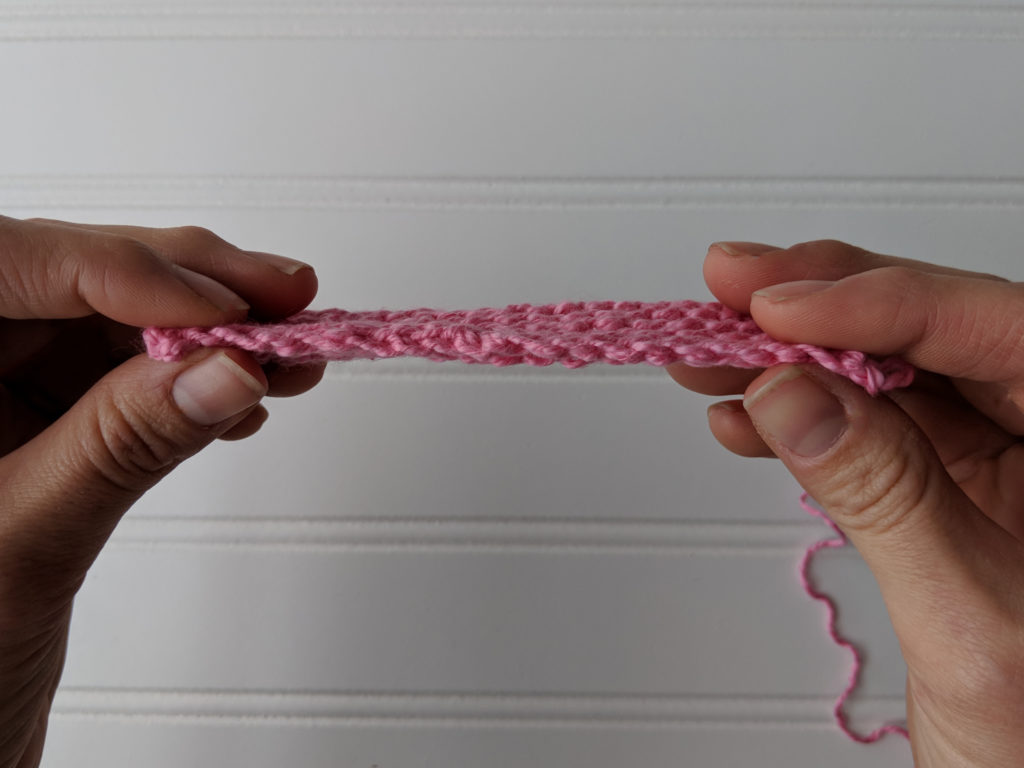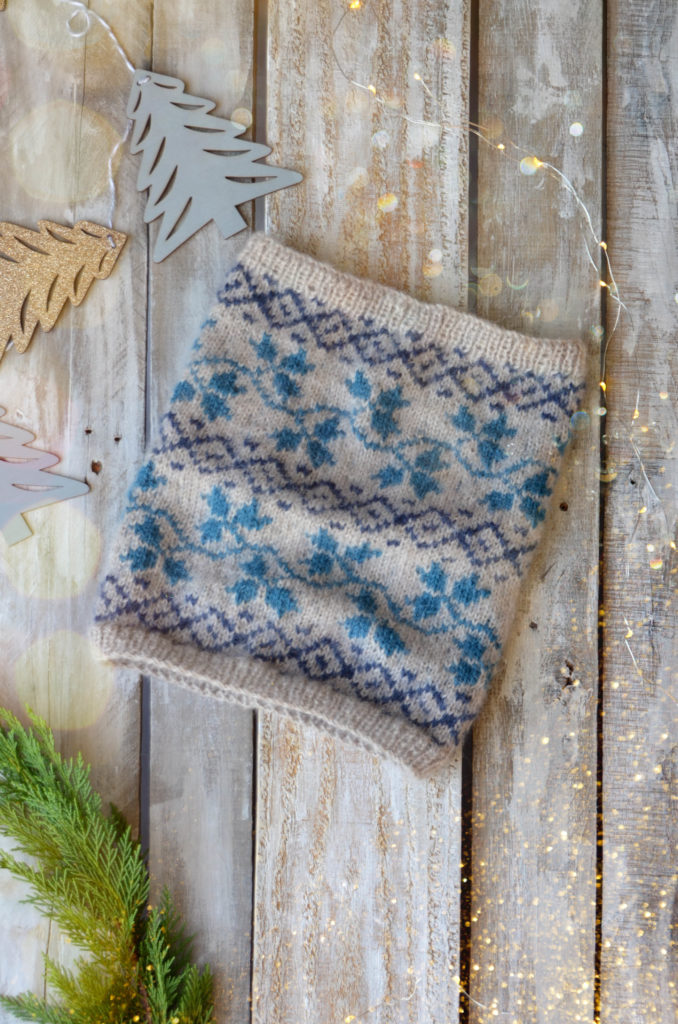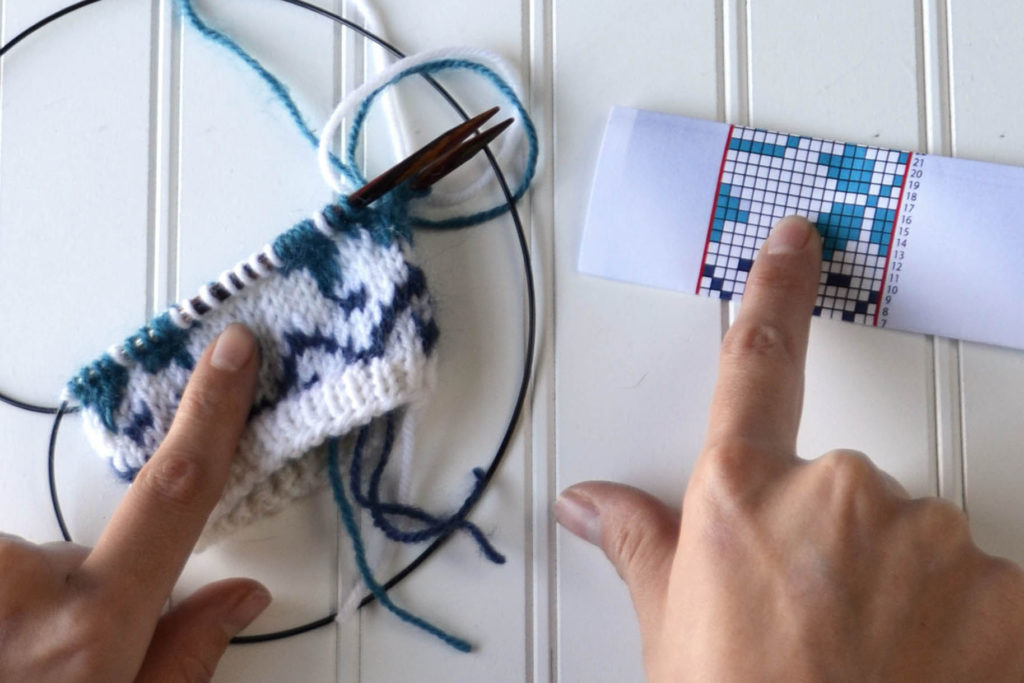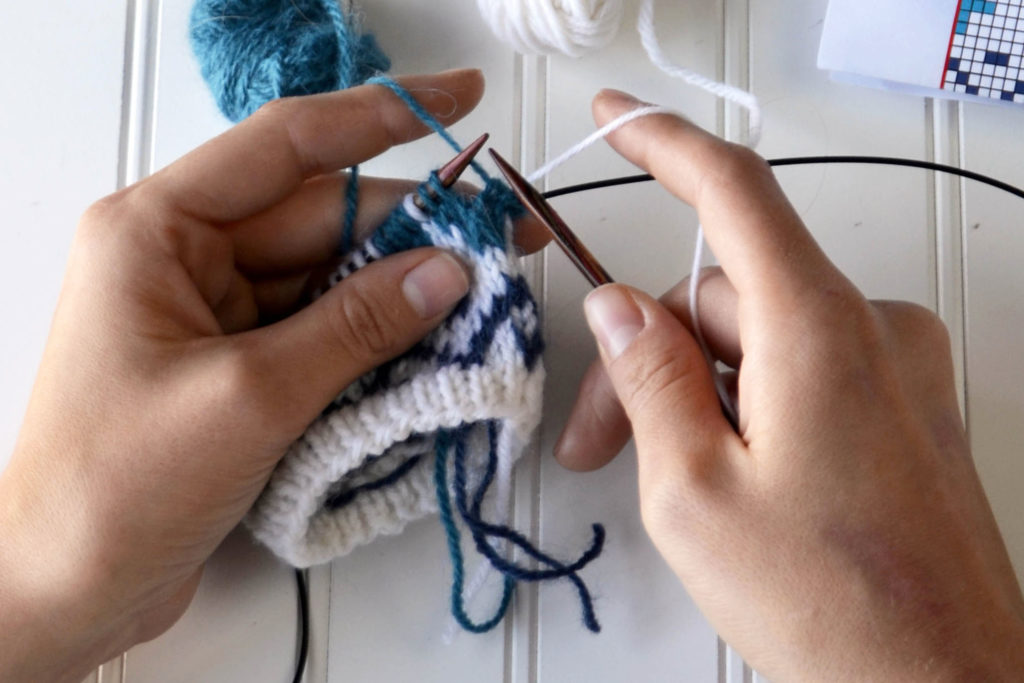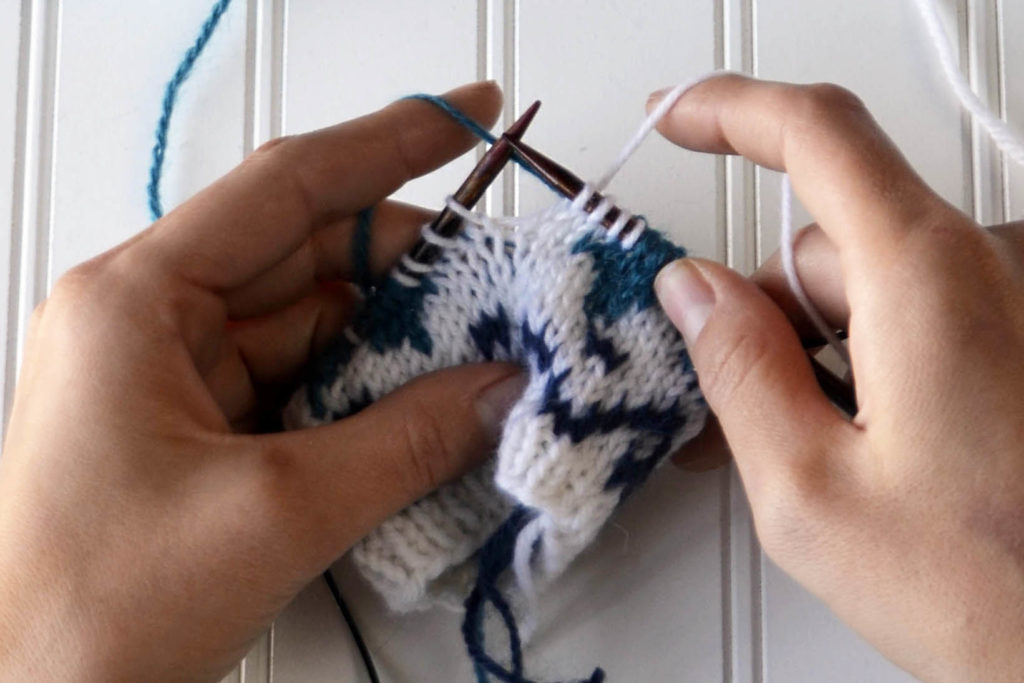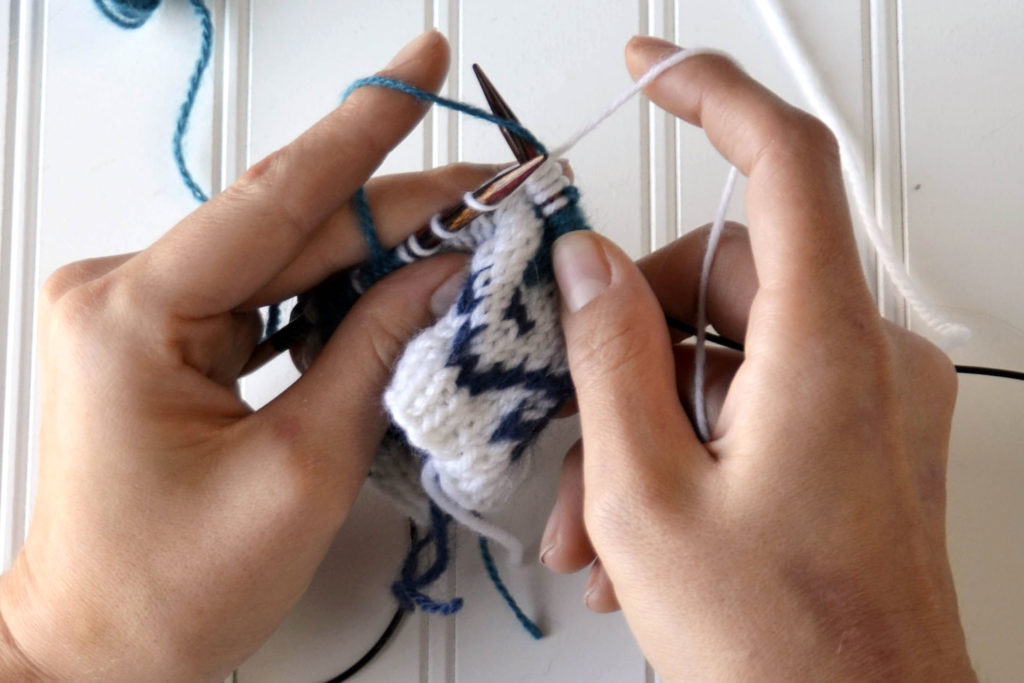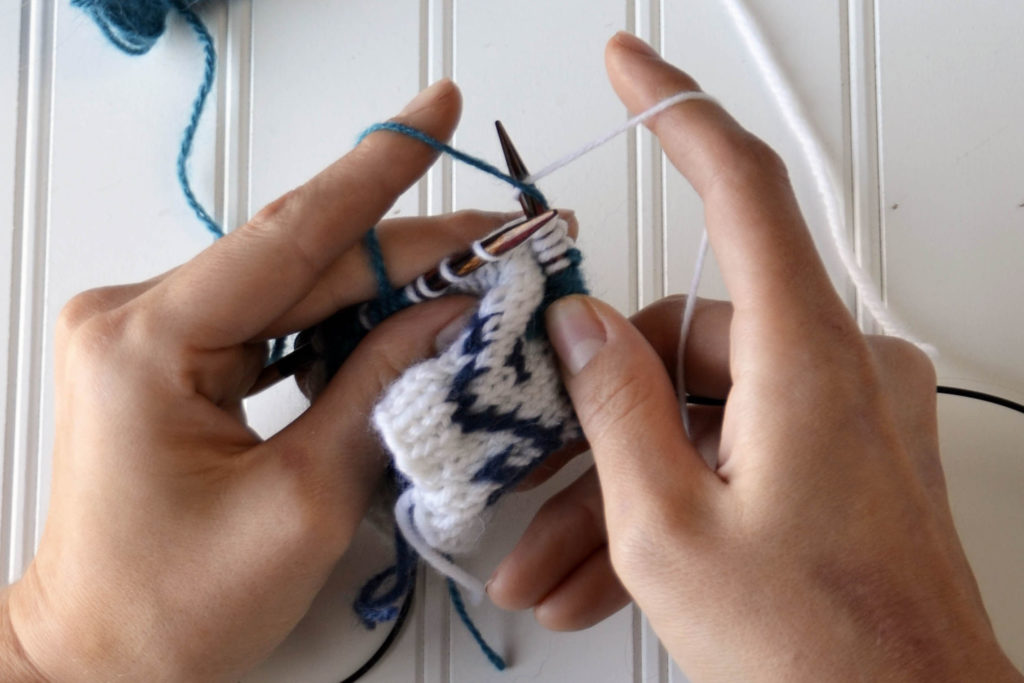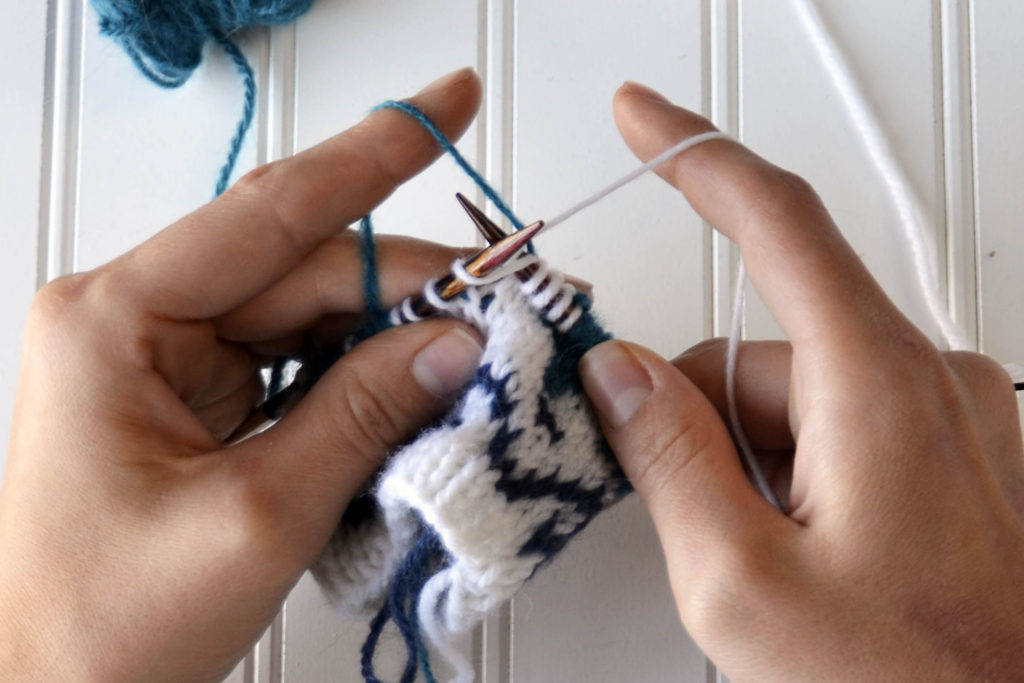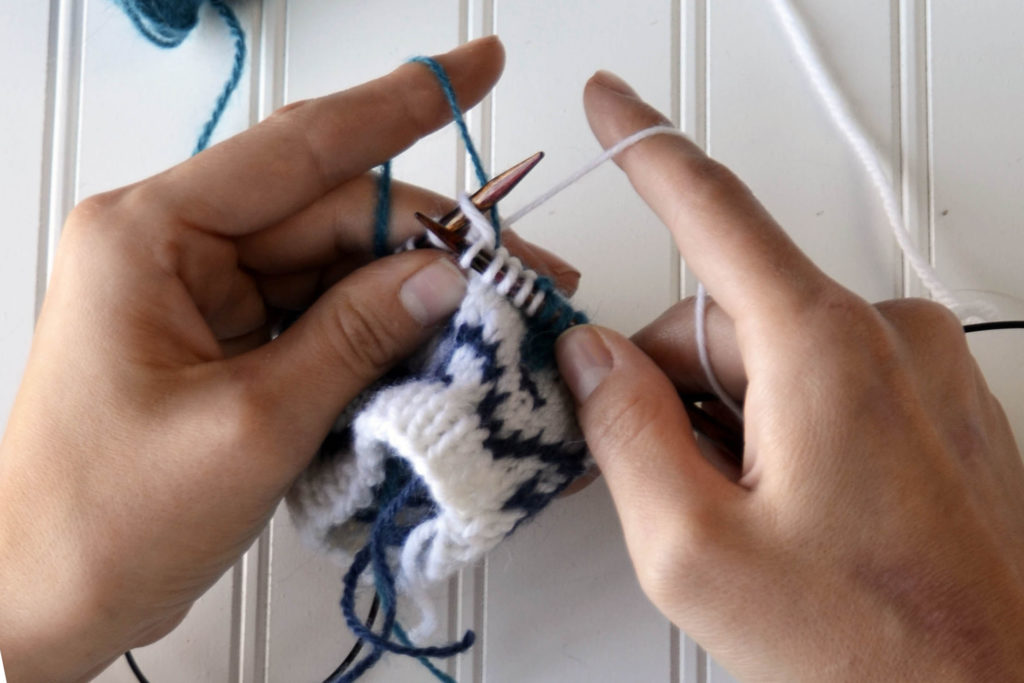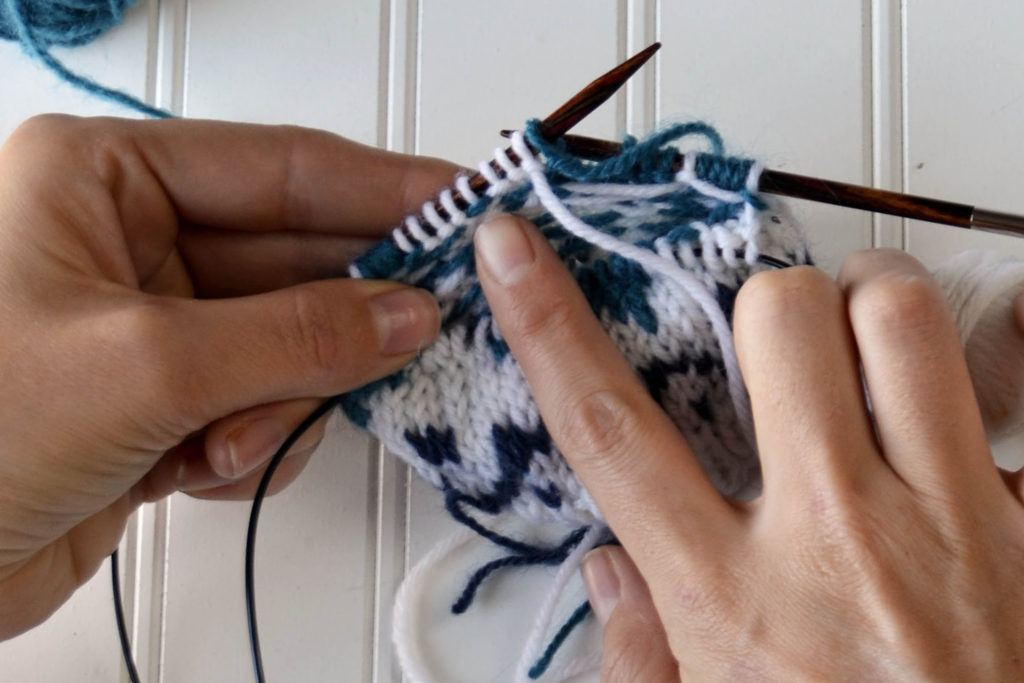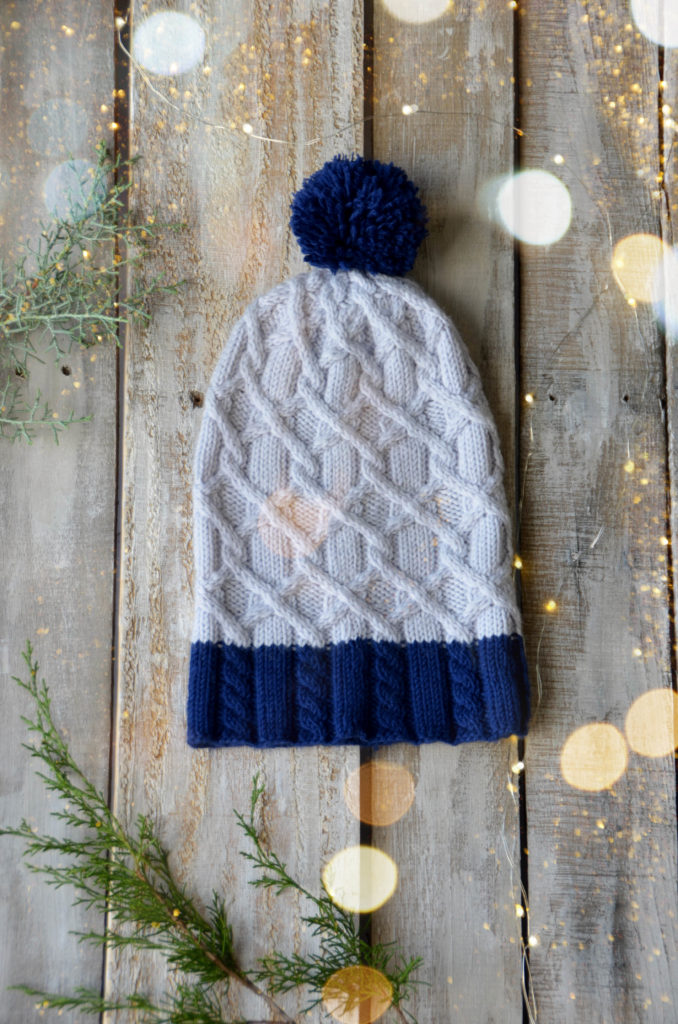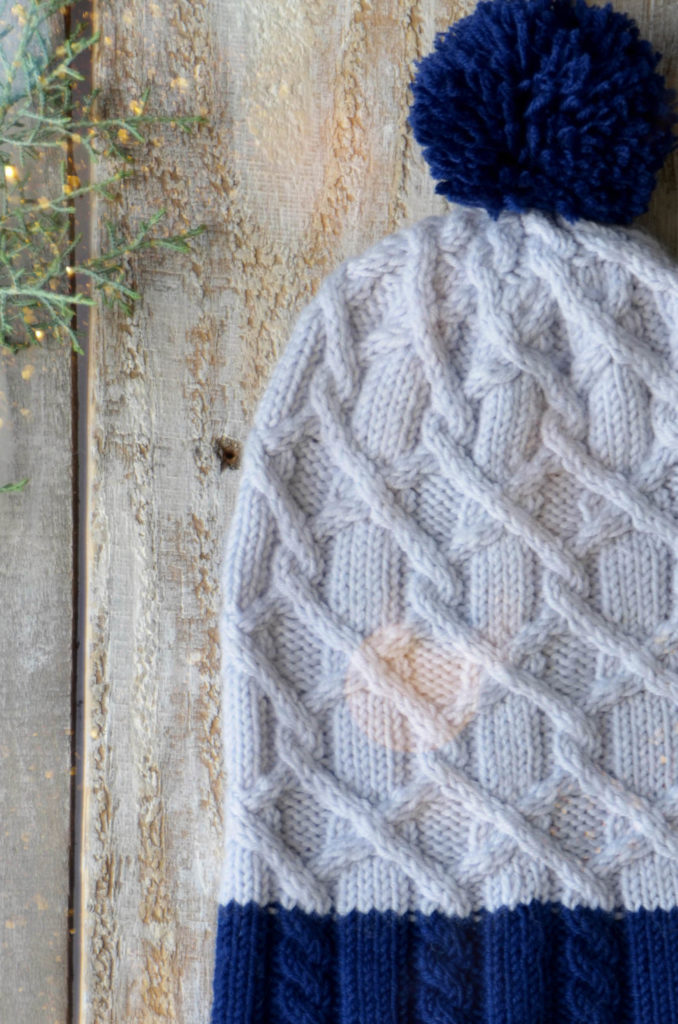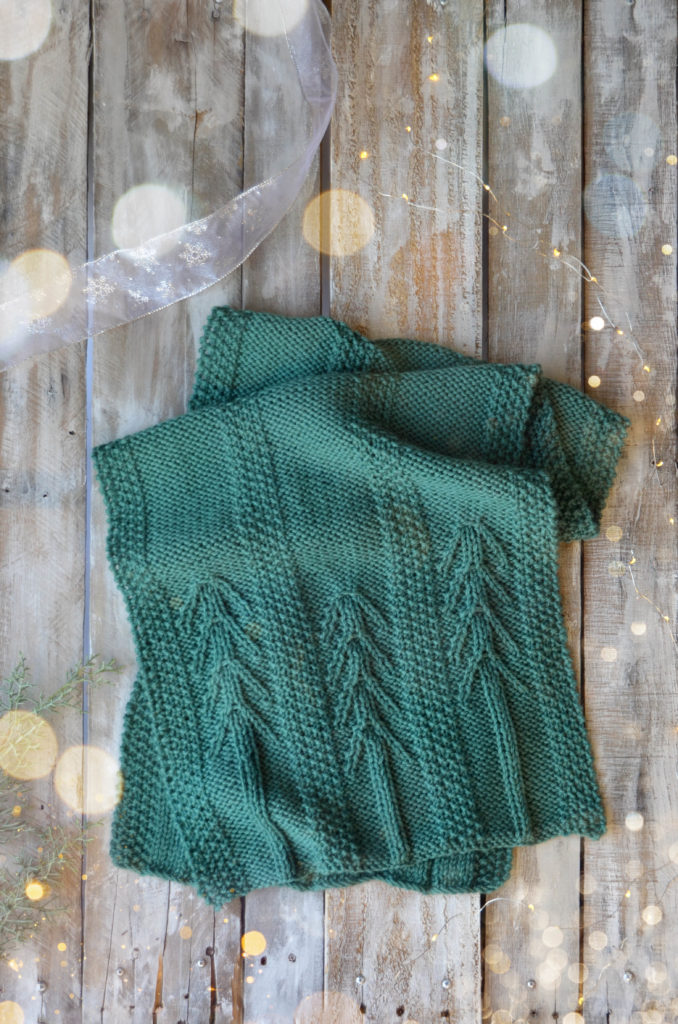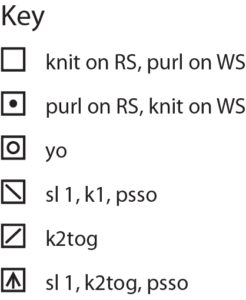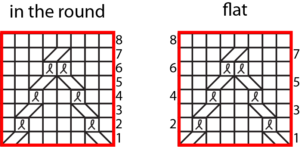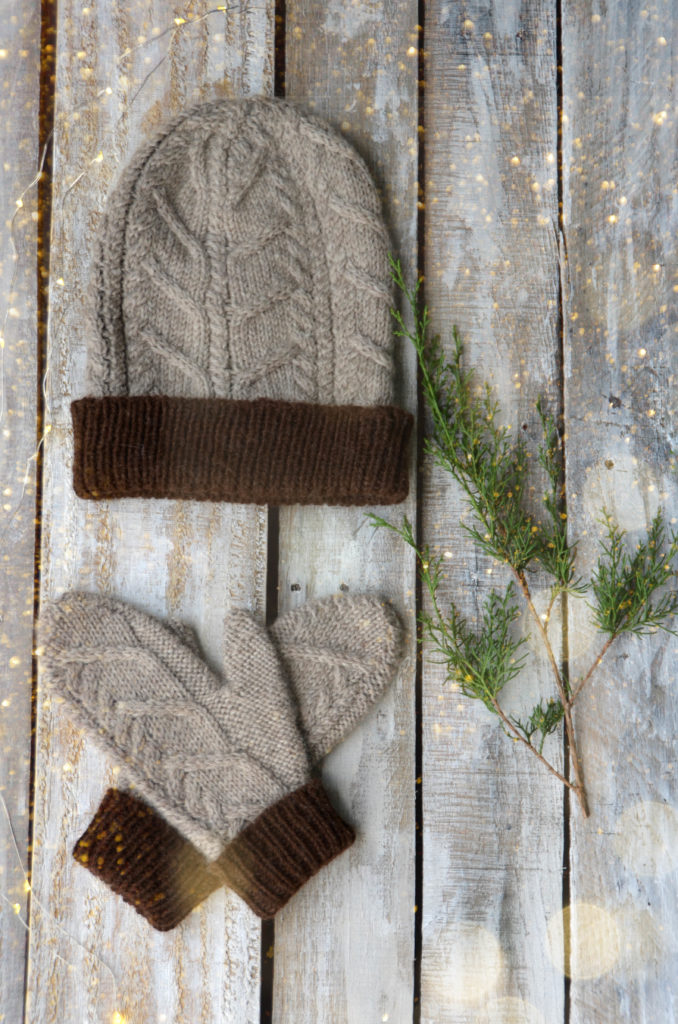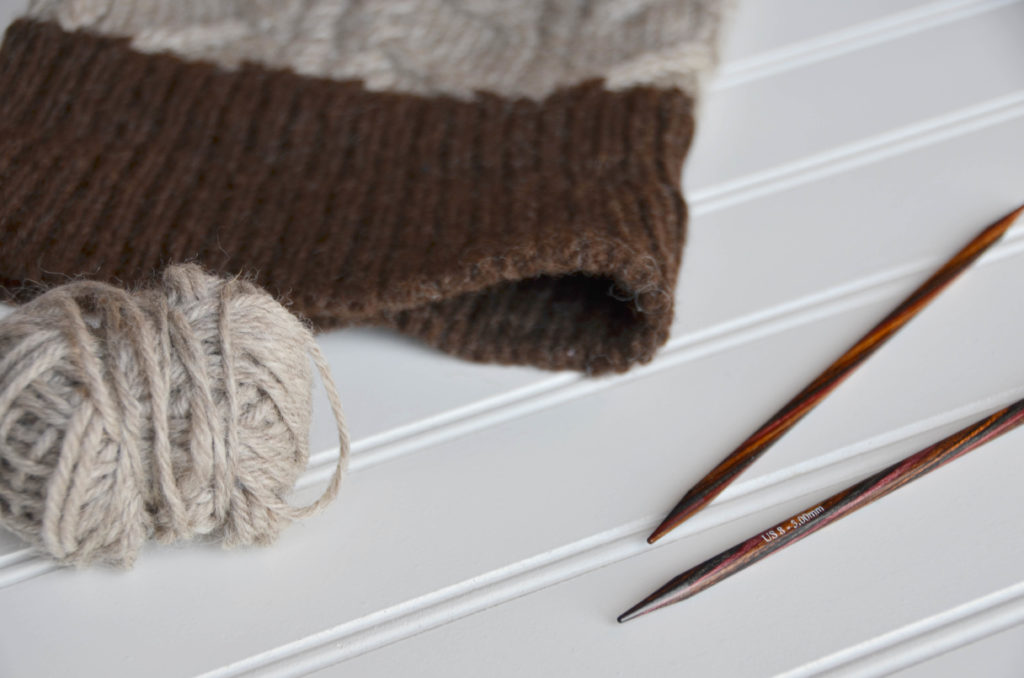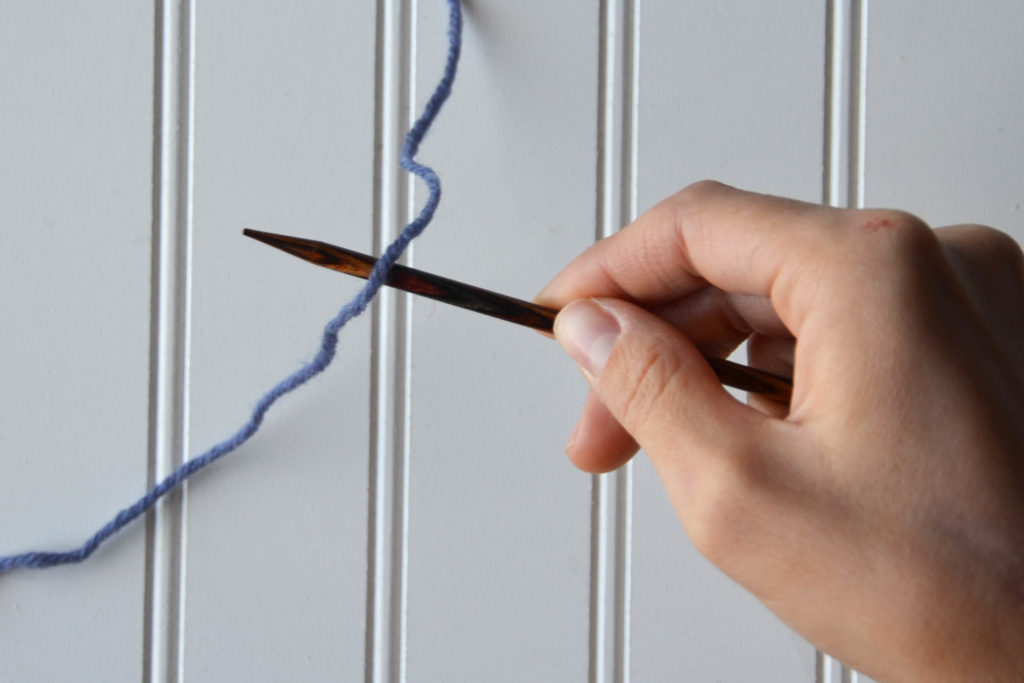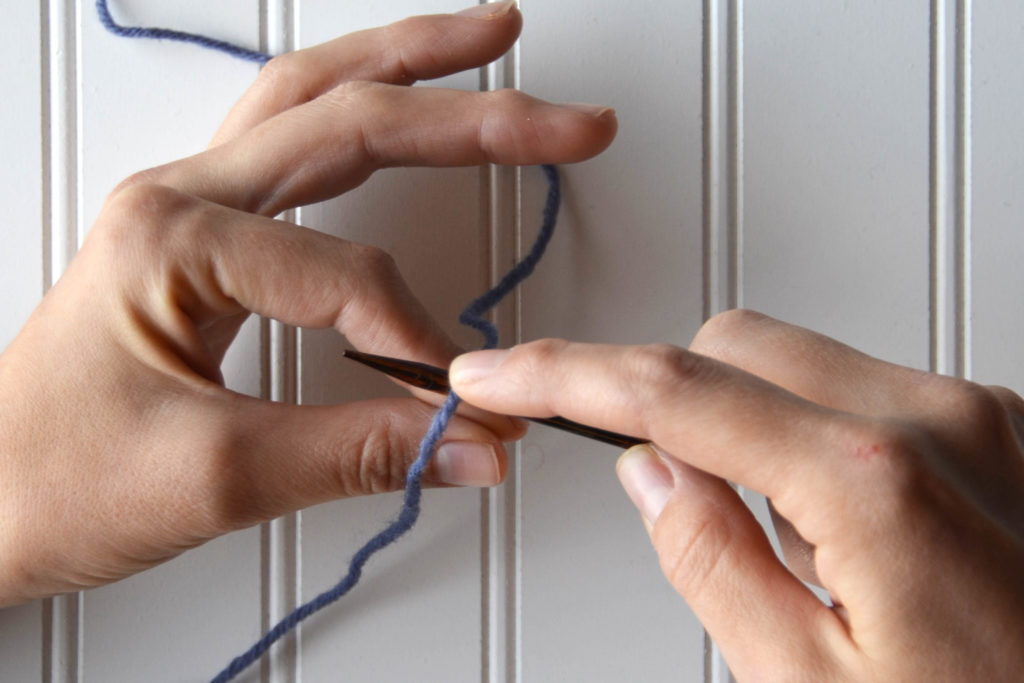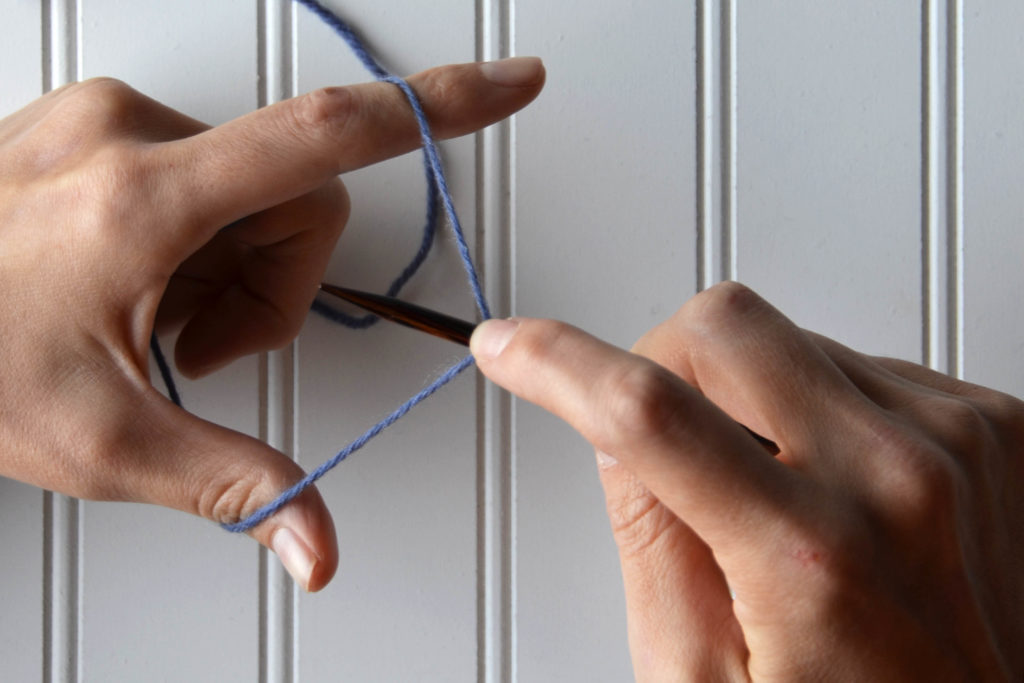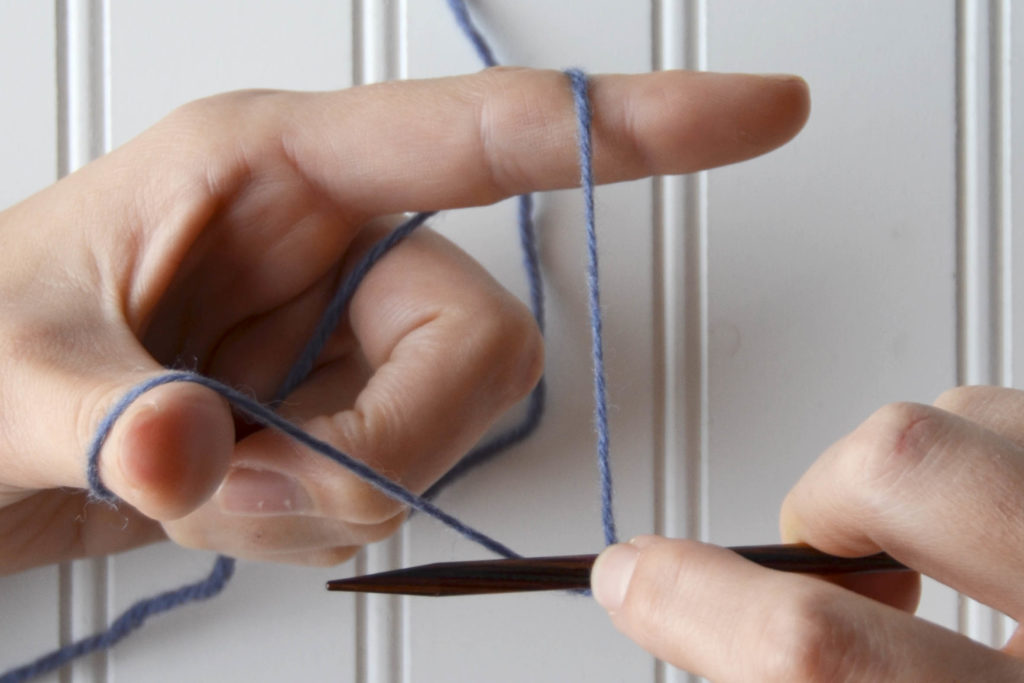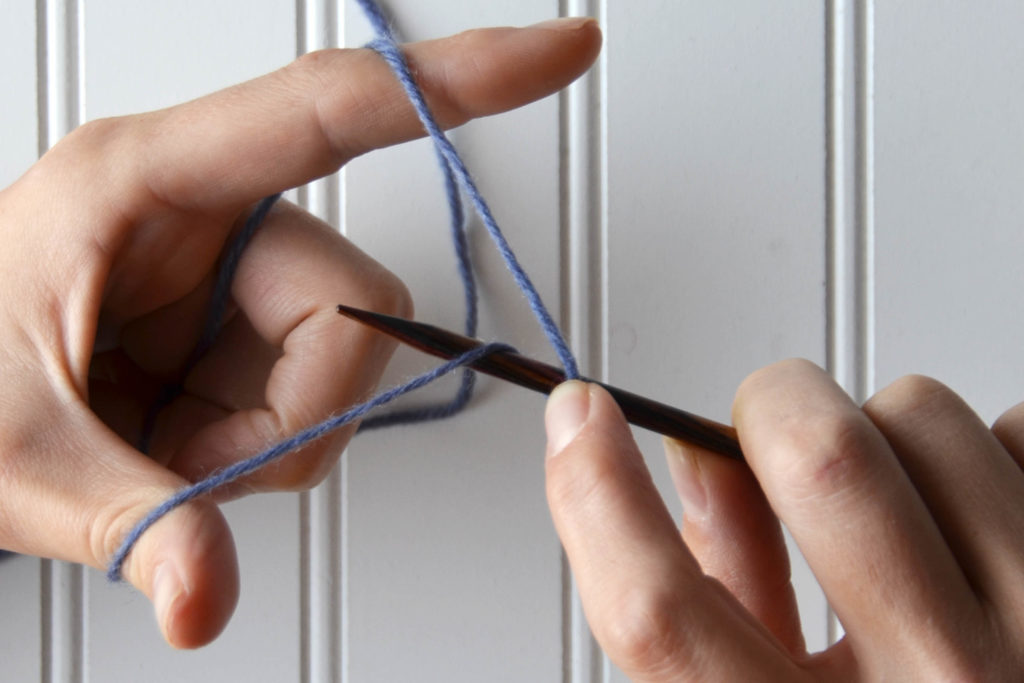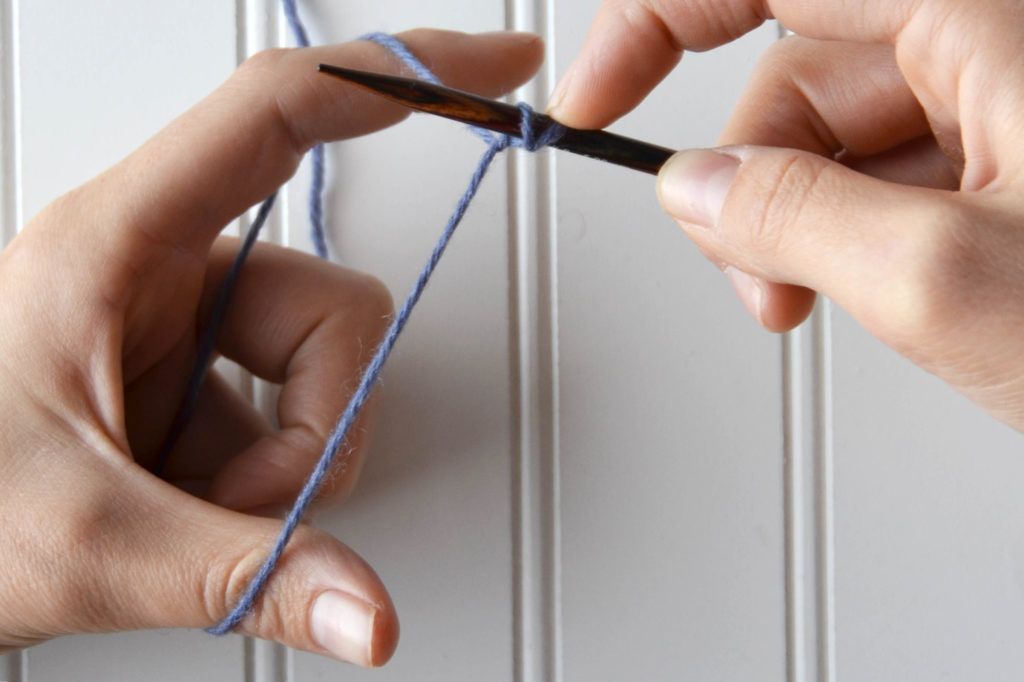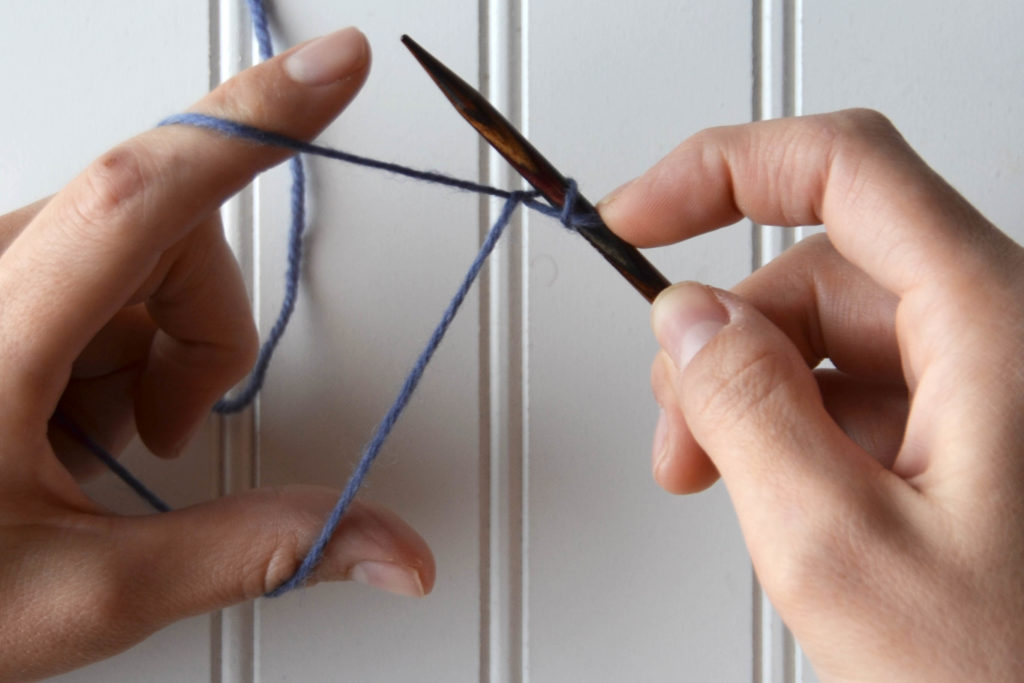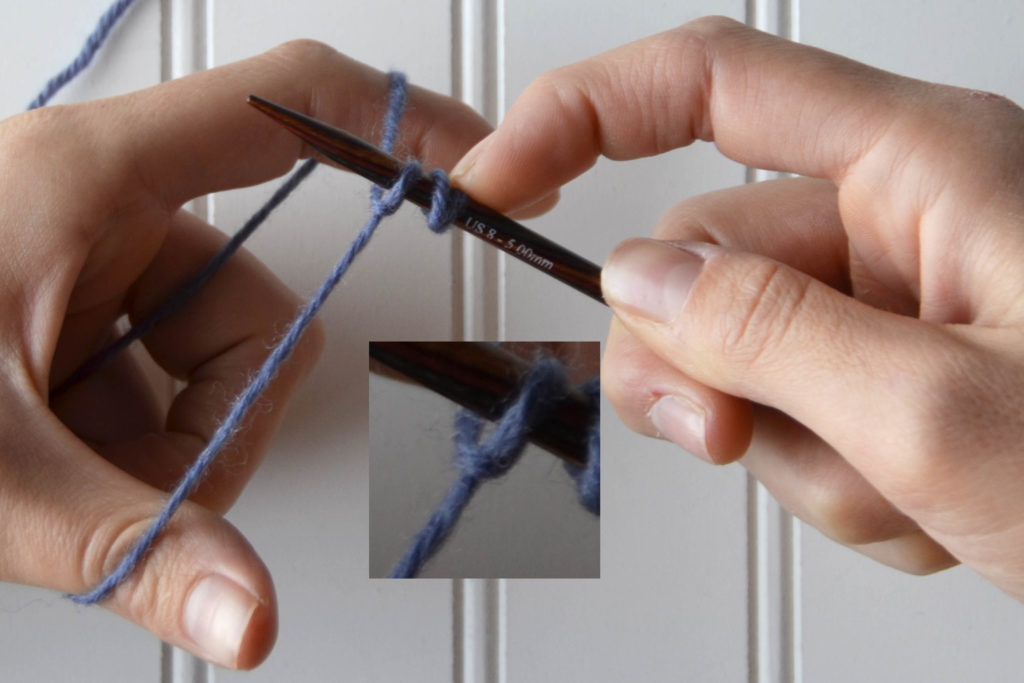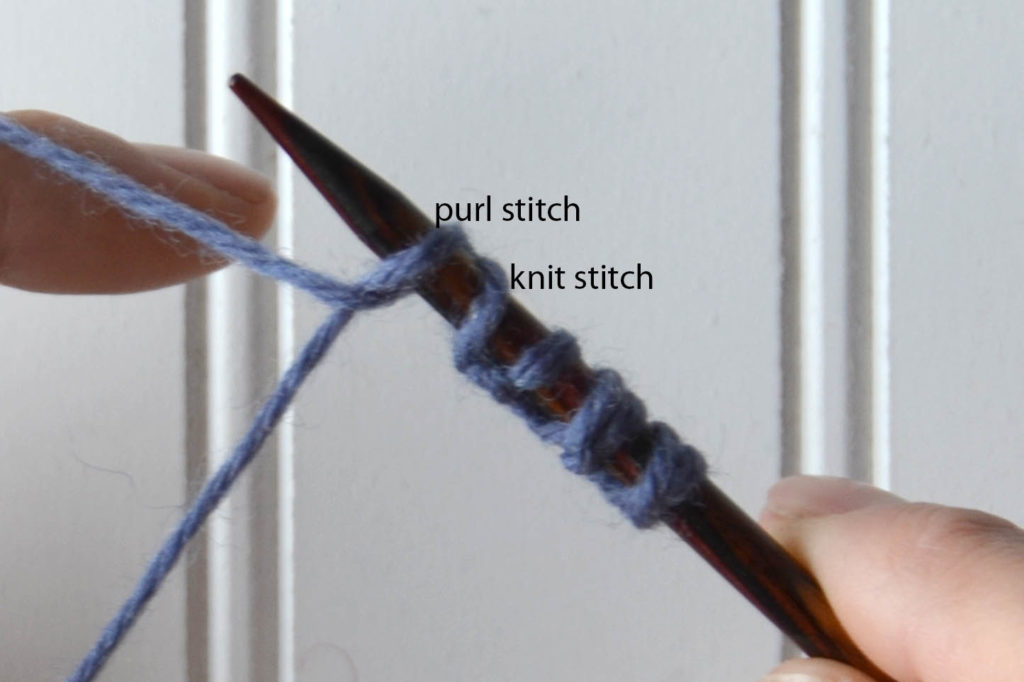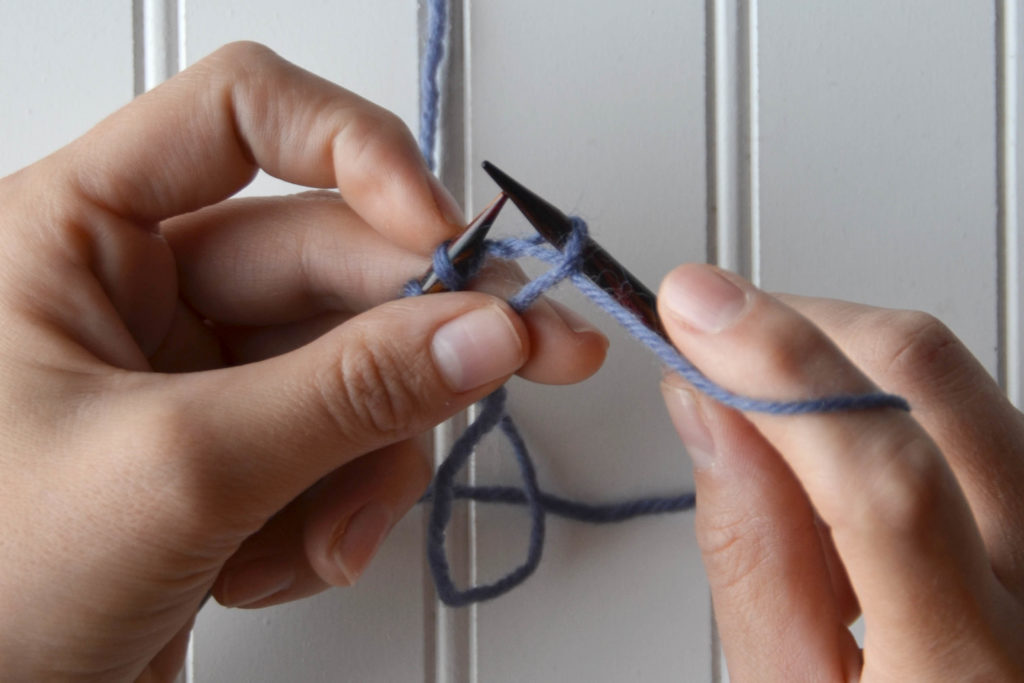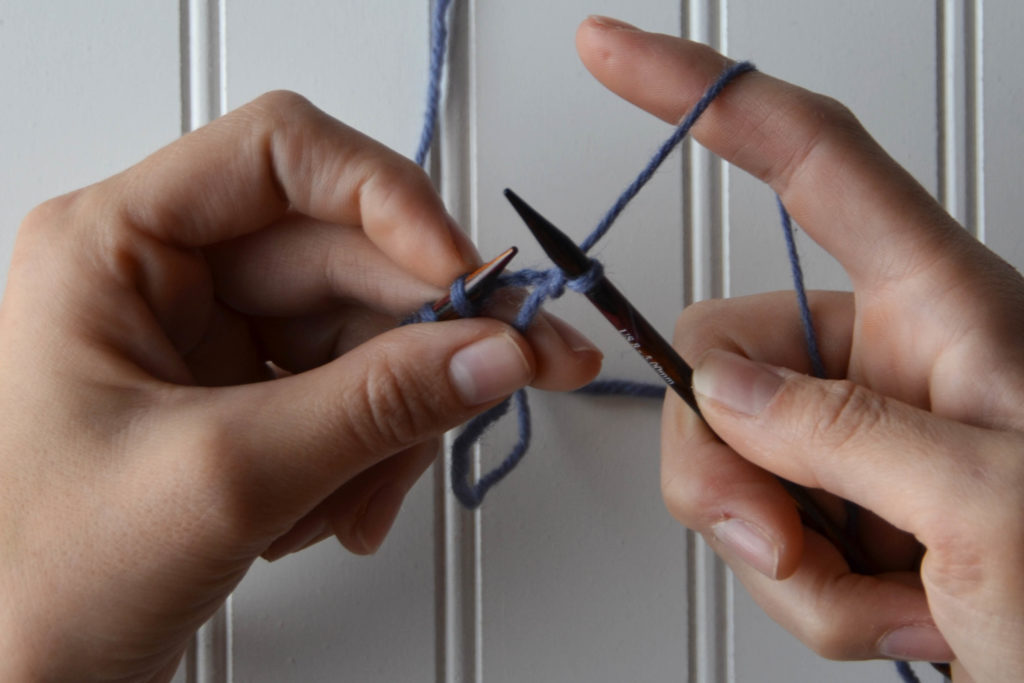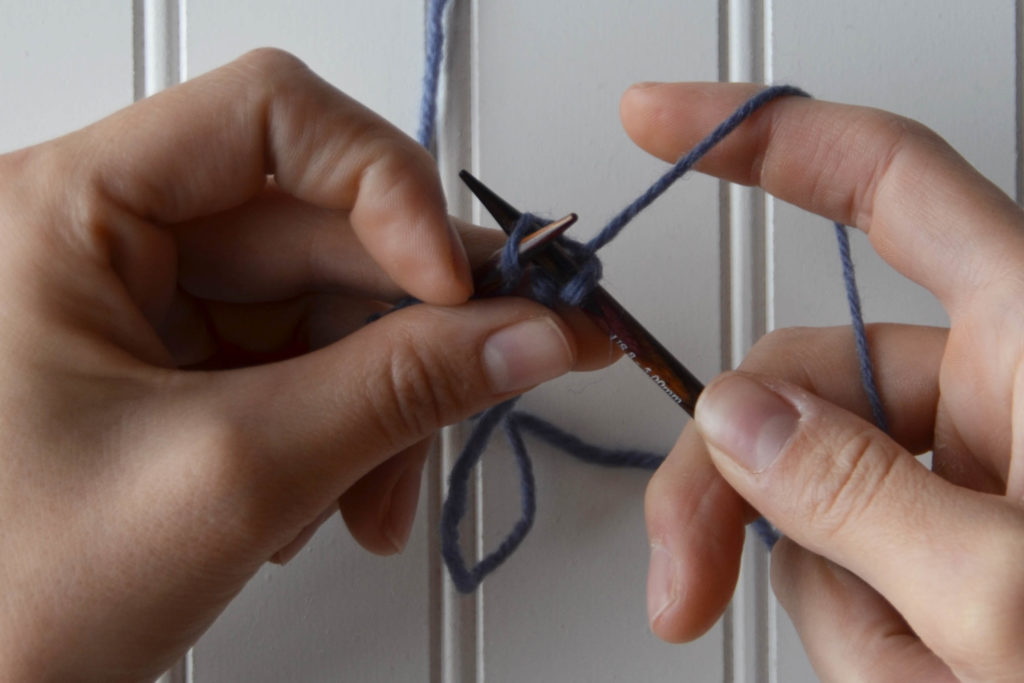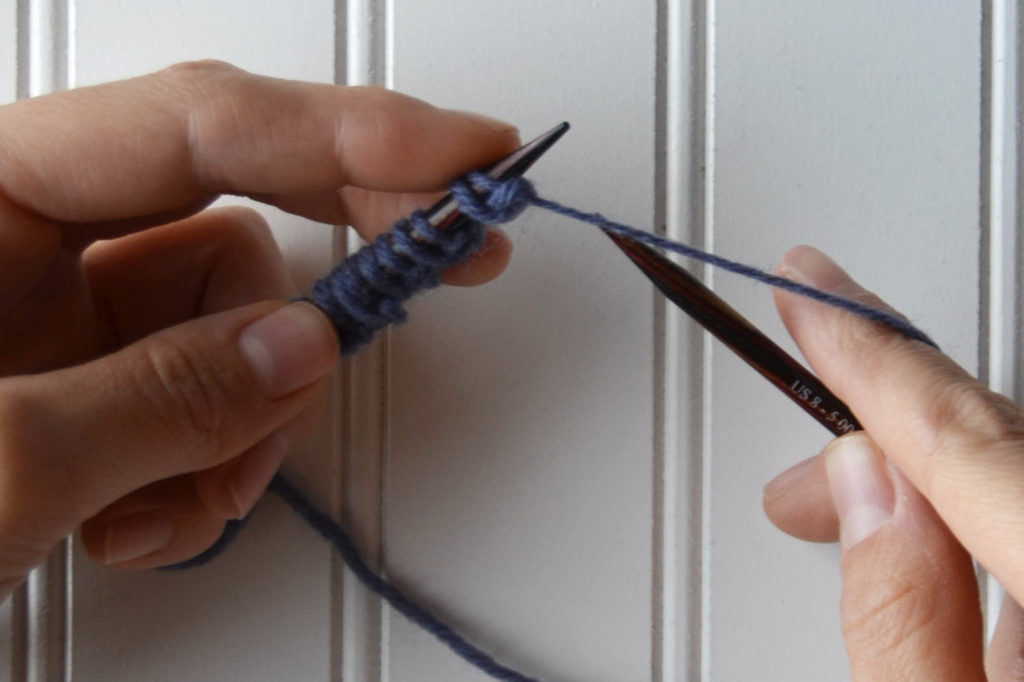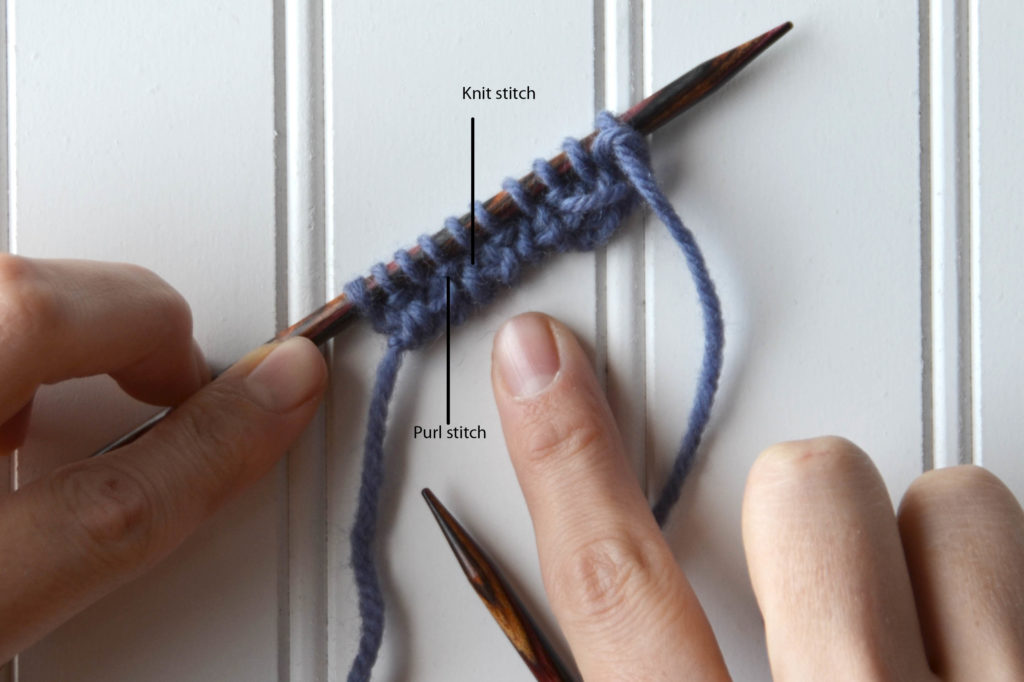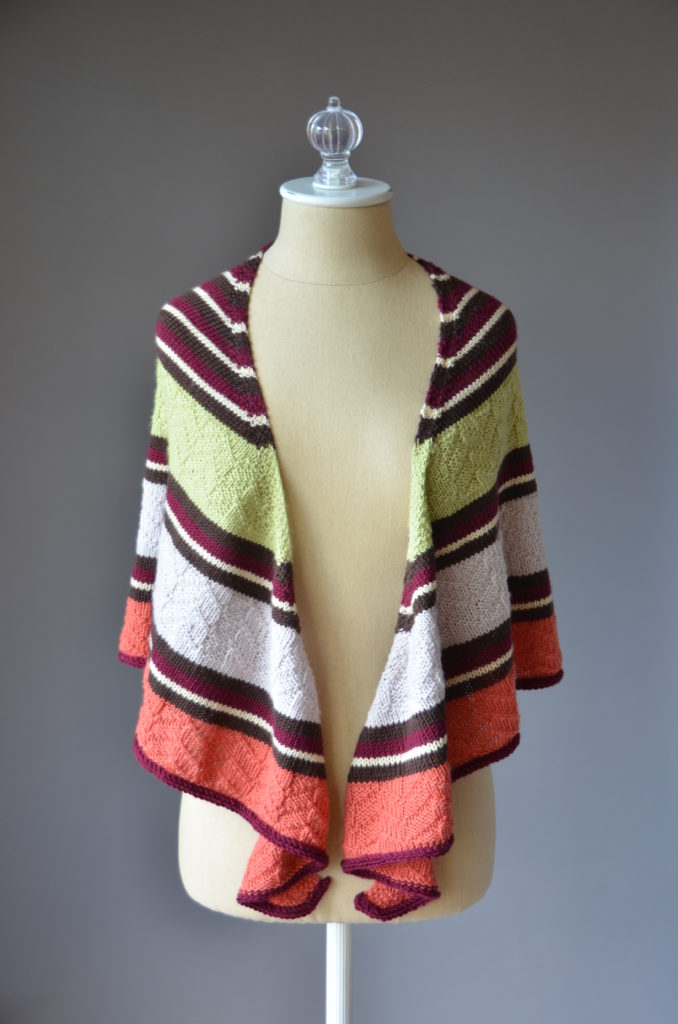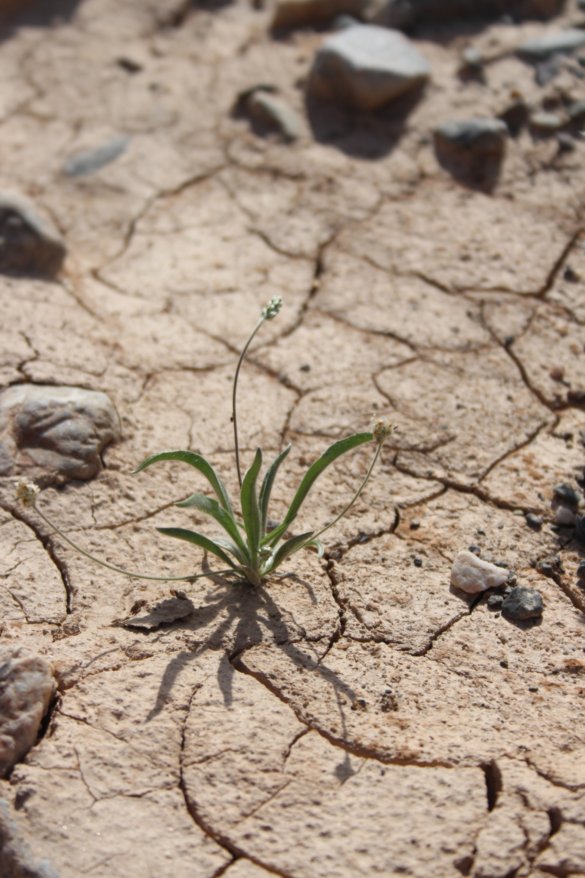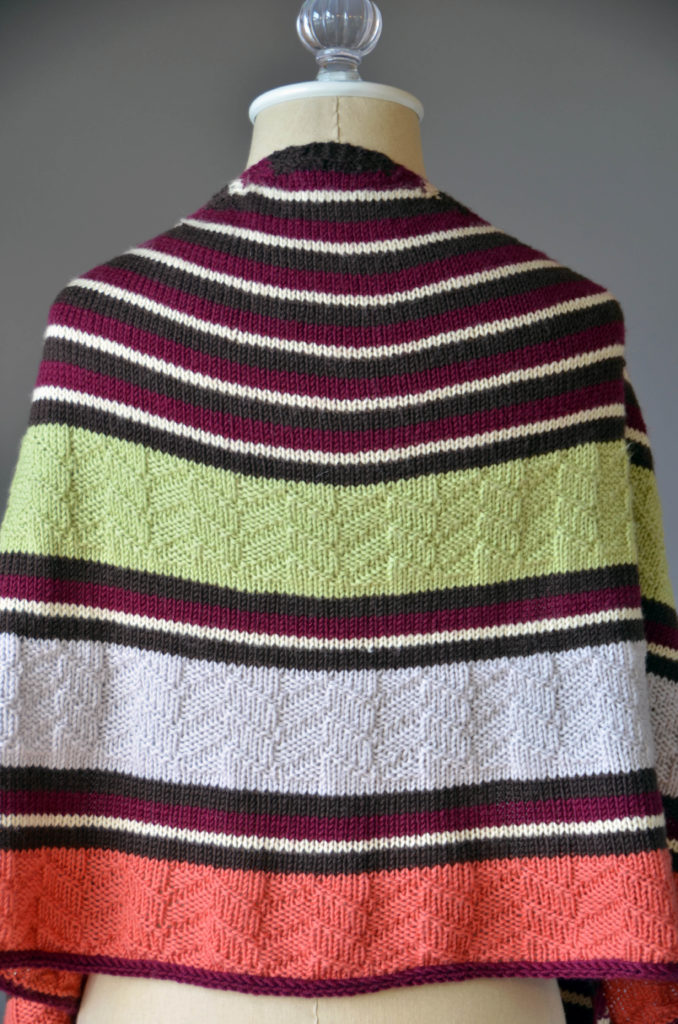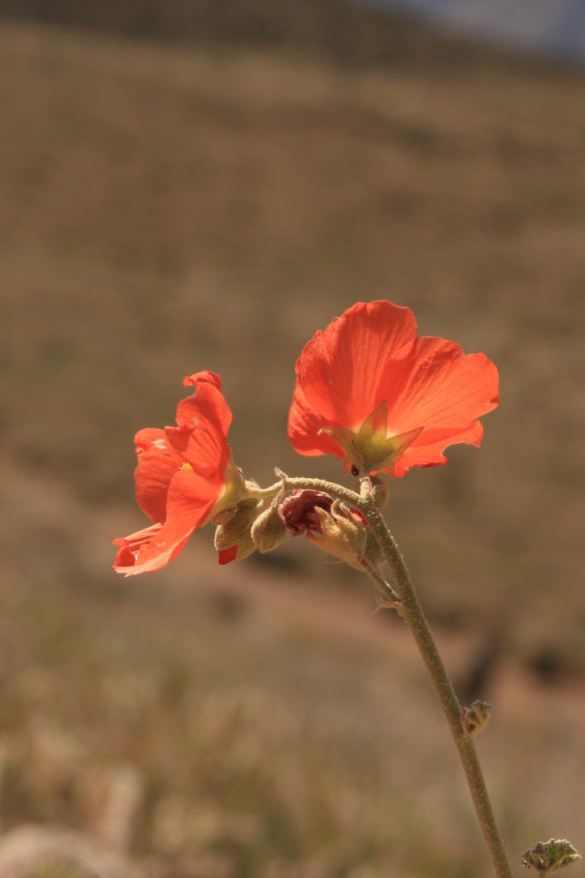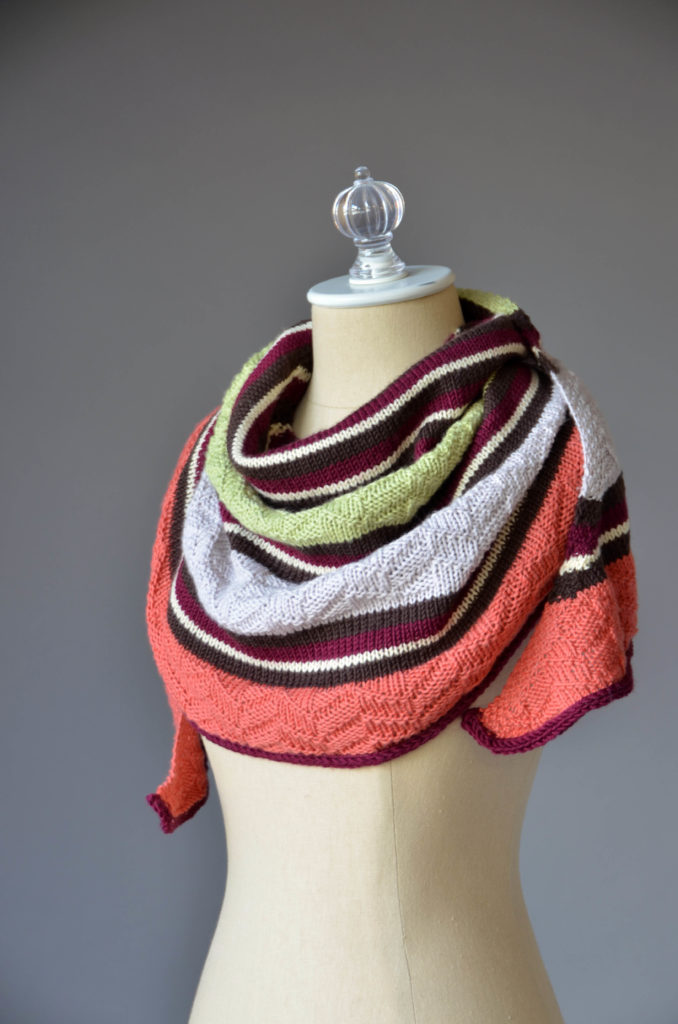Perhaps my favorite collection we’ve released for fall so far is Light & Shadow. It’s a collection of gorgeous, incredibly wearable patterns knit in anti-pilling Uptown DK.
A lot goes into planning our pattern collections, and it’s always so exciting to see designs develop. Amy and I begin with a mood board. Then we move on to creating rough sketches. You can see a few of mine from our recent collections below:

Naturally not every sketch makes the final collection. Amy and I work on numerous ideas separately, then we meet to share our ideas, select the designs that will be a part of the collection, and choose colors. Then we get hard to work on making these ideas a reality.
So, which designs made the final cut for Light & Shadow?
I have three designs in the collection. First up: Crossroads.
If I had to choose a favorite, this might be it. This design started with a bold cable from Norah Gaughan’s Knitted Cable Sourcebook. I didn’t want to just slap the pattern onto a sweater. I opted for a relaxed, cozy fit with drop shoulders, garter ridges, a split hem, and understated bishop sleeves.
The sleeves sit at bracelet length on our fantastic model, Jarin, however; it’s super simple to lengthen them as the shaping occurs just before the cuff.
Next, we have Northbound.
I wanted to create the perfect, infinitely wearable turtleneck. I know not everyone loves turtlenecks, but I sure do! Northbound was initially imagined as a proposal for a print magazine before I started working at Universal. I loved it, so I held onto the idea – the Light and Shadow collection seemed to be a perfect match.
Northbound has some of my favorite design elements: set-in sleeves, saddle shoulders, seed stitch, and cables. If you love a simple design with thoughtful details, this pattern is for you.
My final design is perhaps the most unique: Topography.
Topography features sculptural welts that move diagonally across the sleeves. The effect is simpler to construct than you might expect.
The sleeves feature traveling twisted stitches that are used as a guide to creating the welts. After you’ve knit the sleeves, stitches are picked up stitches along the legs of the twisted stitches. Then you simply knit and graft. Easy-peasy. Not a fan of the welts? Just stick with the twisted stitches and you have a simple wardrobe staple.
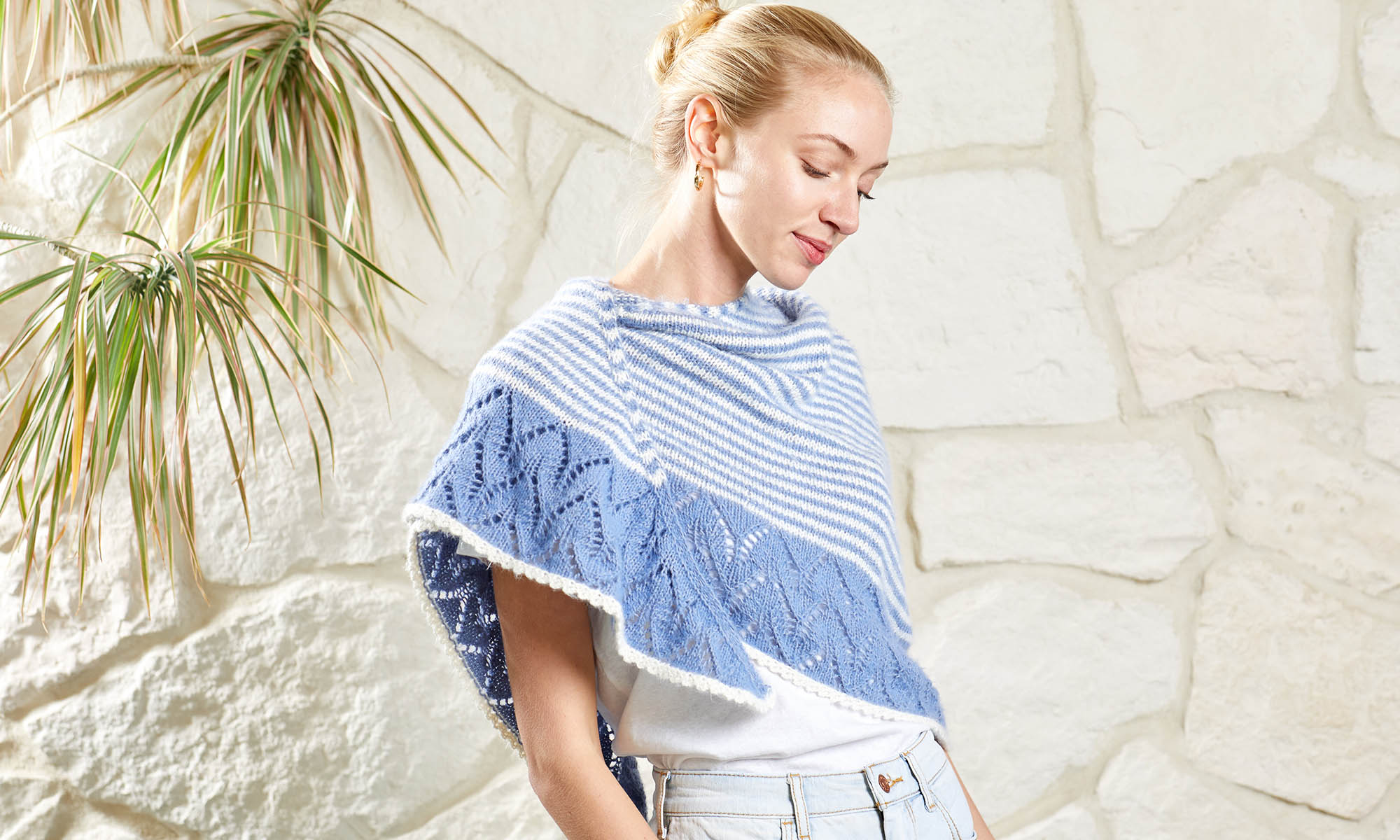


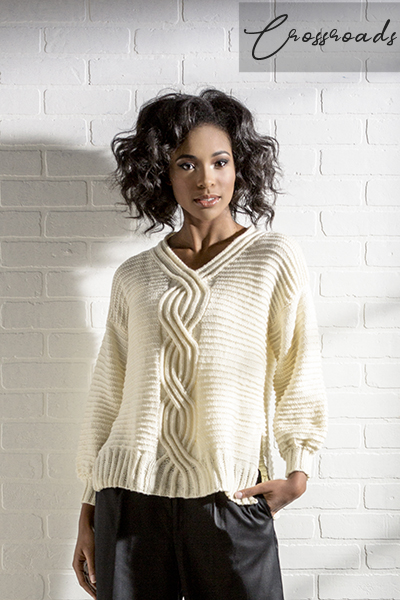
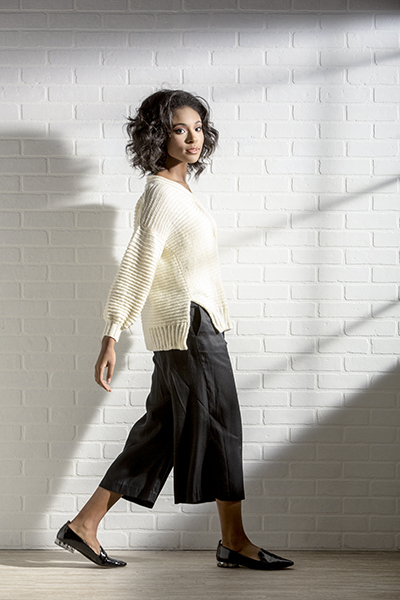
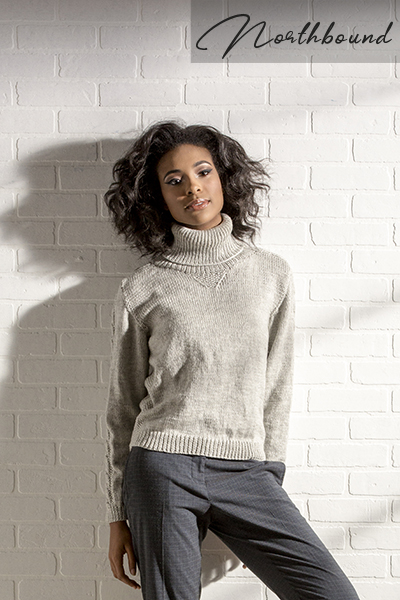

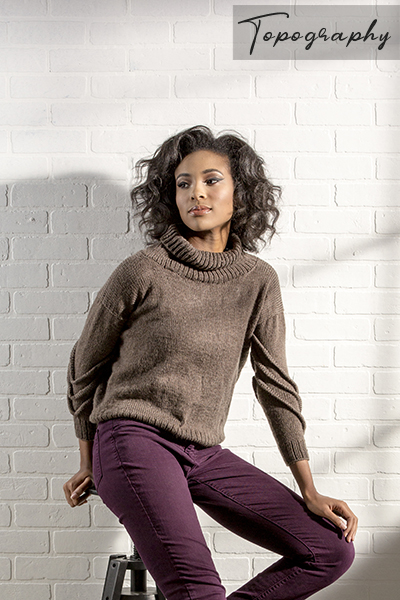
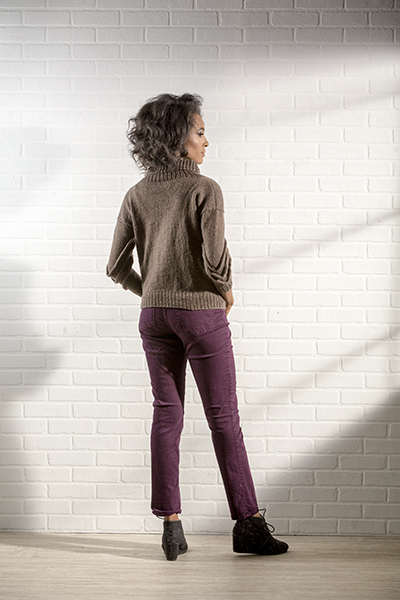
 W
W